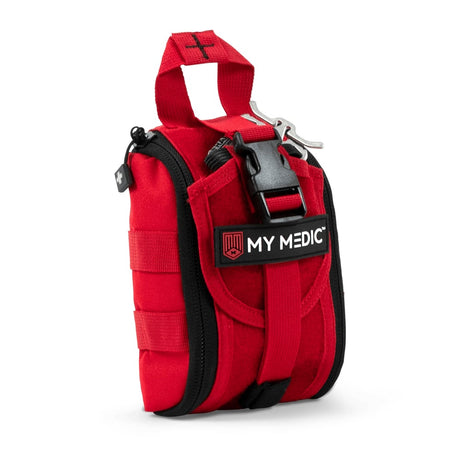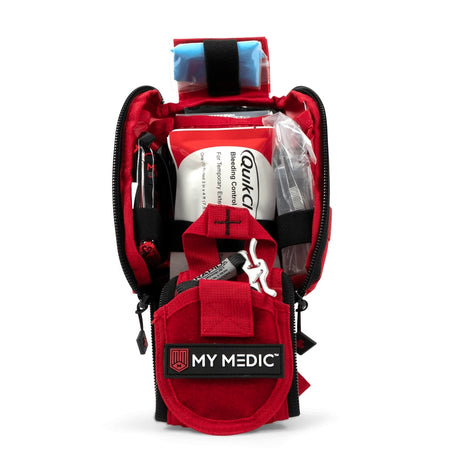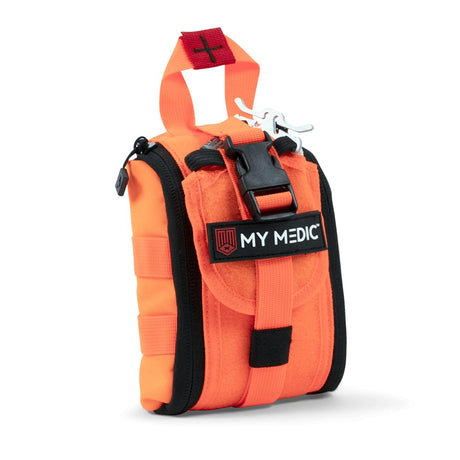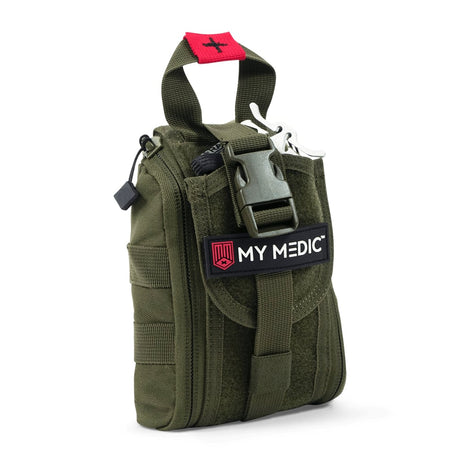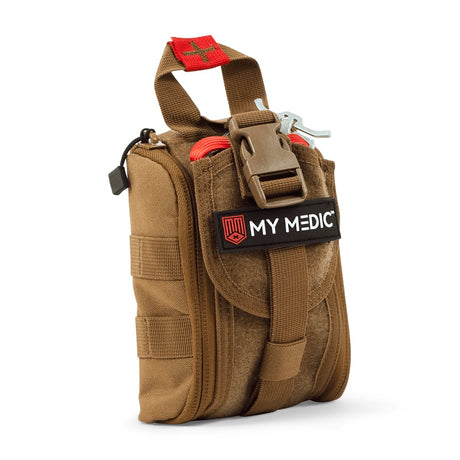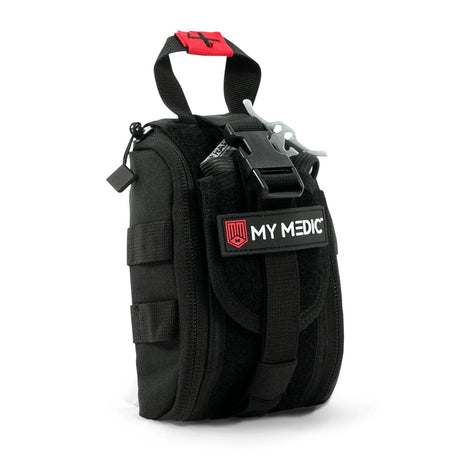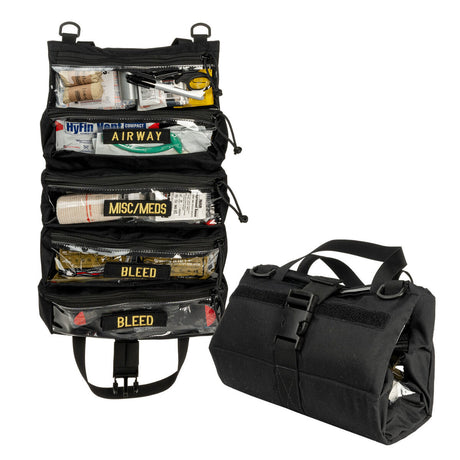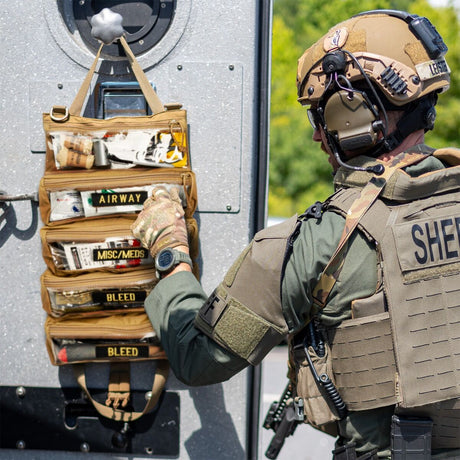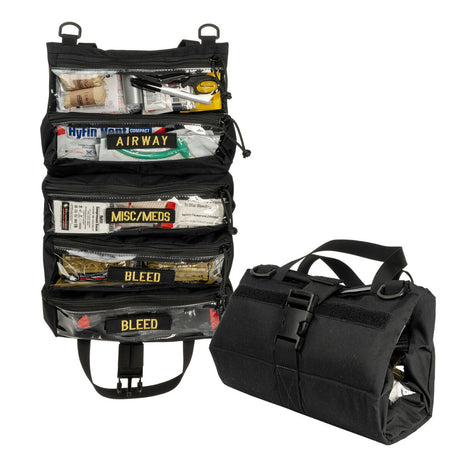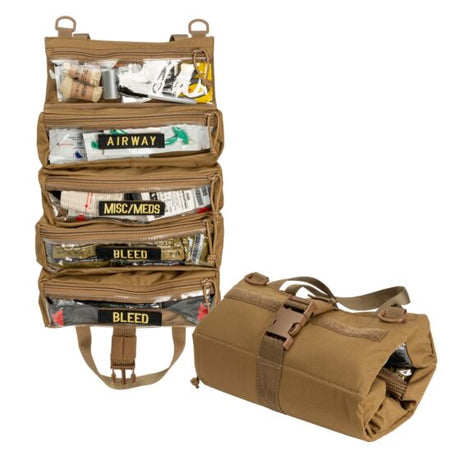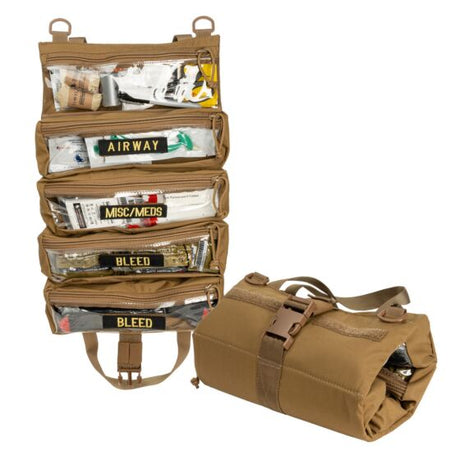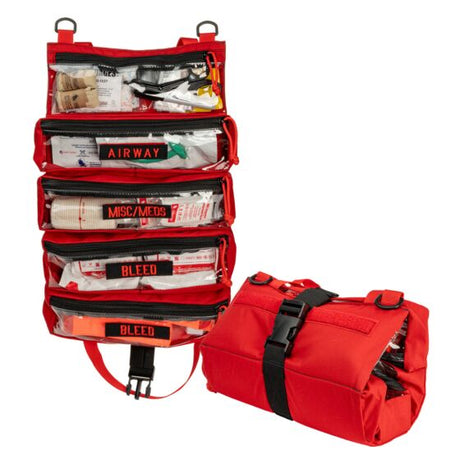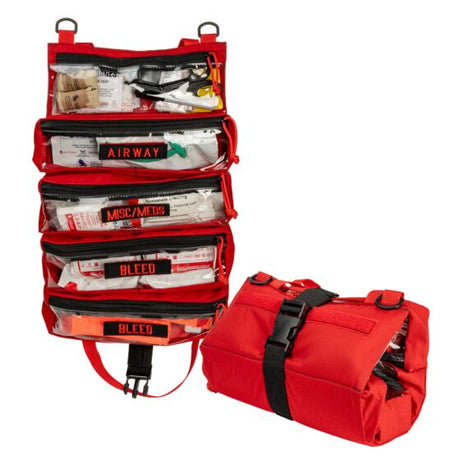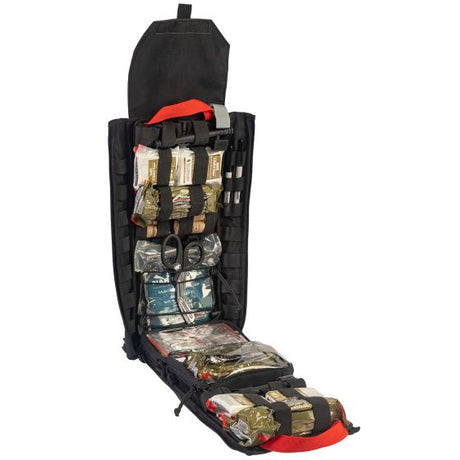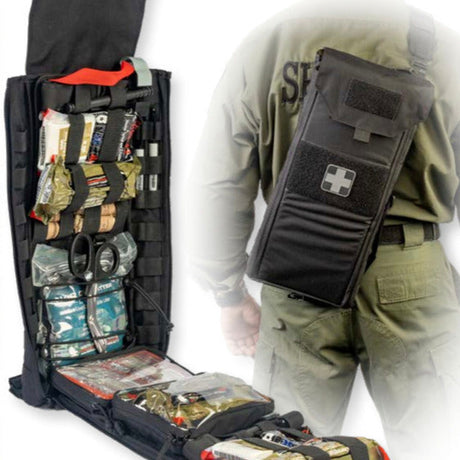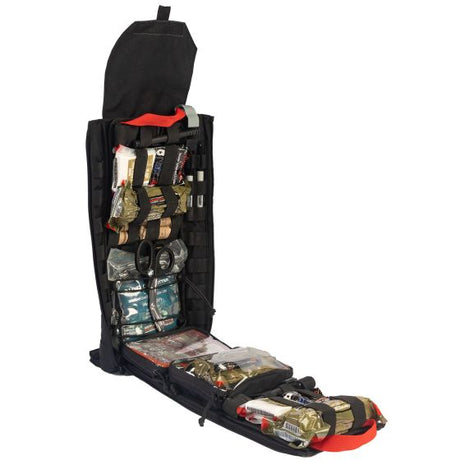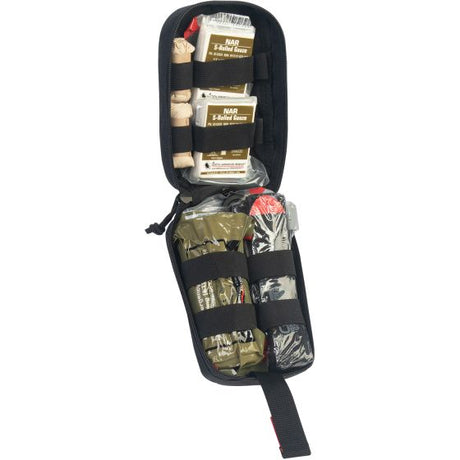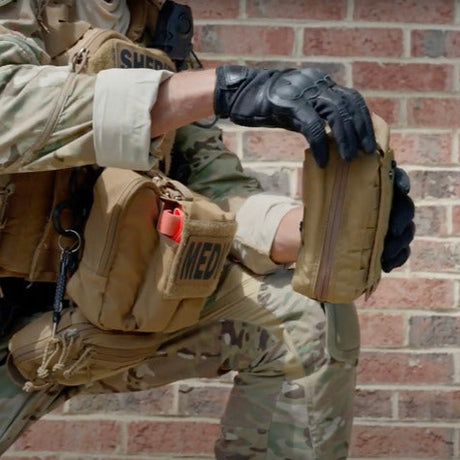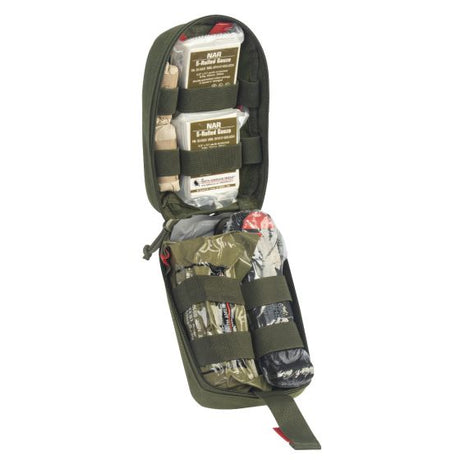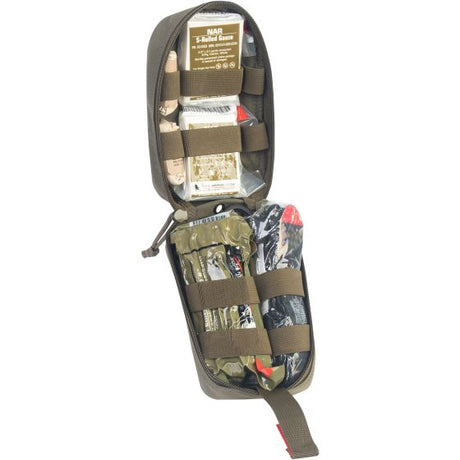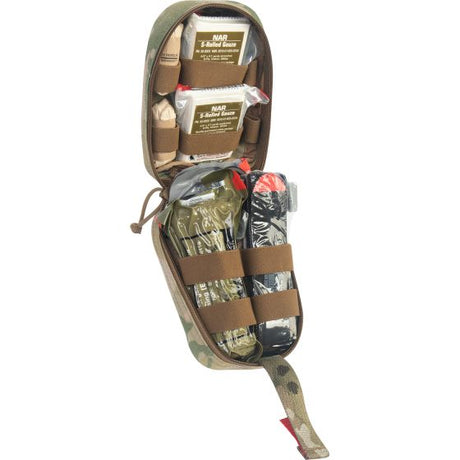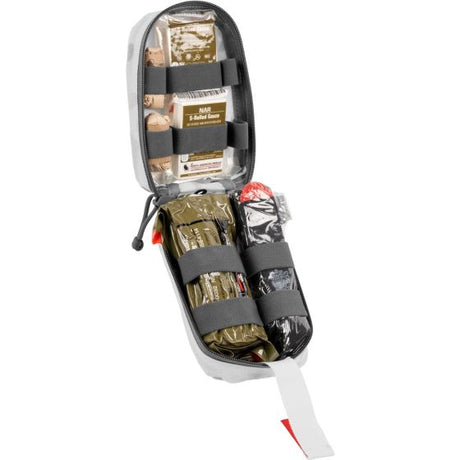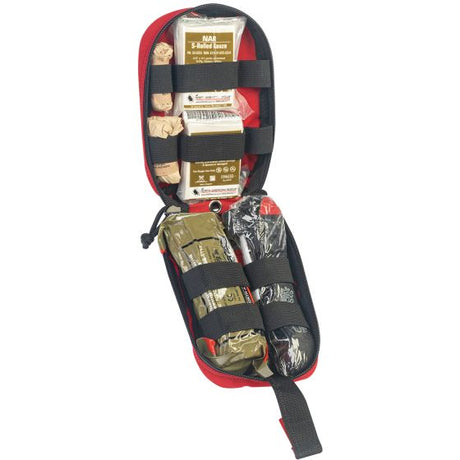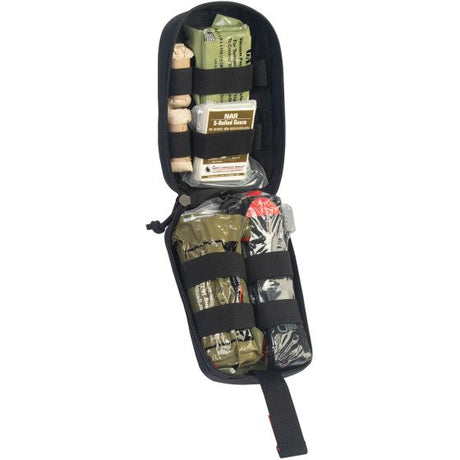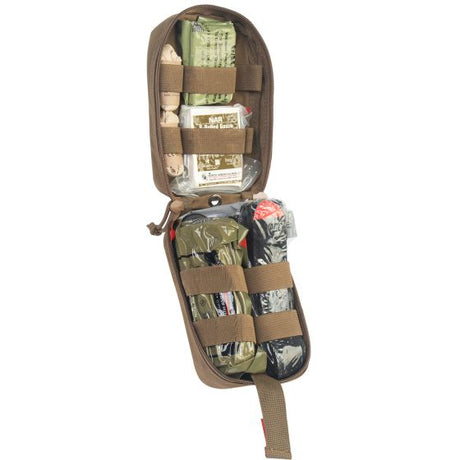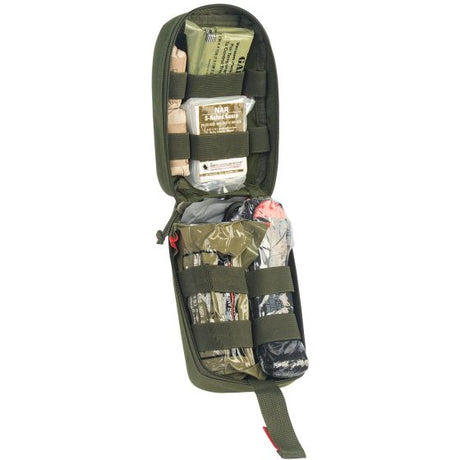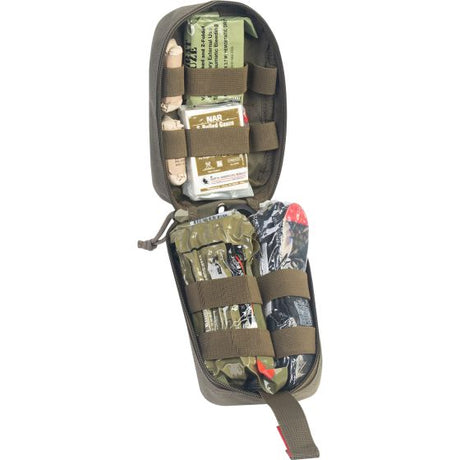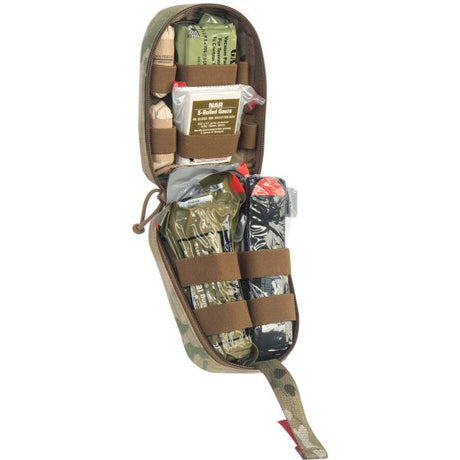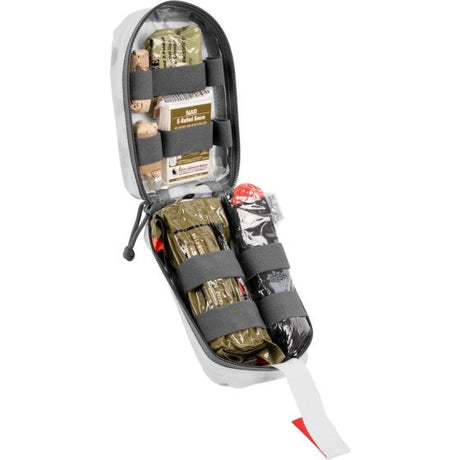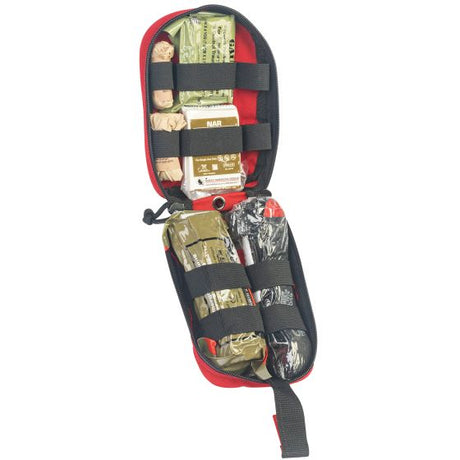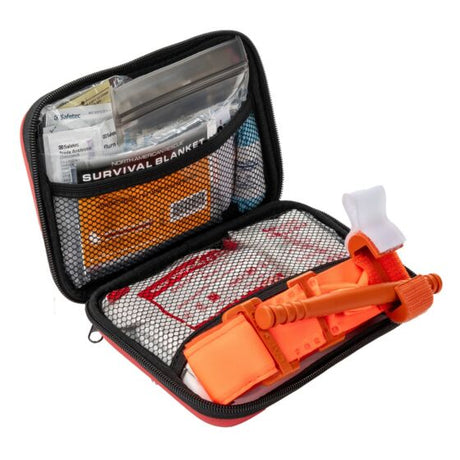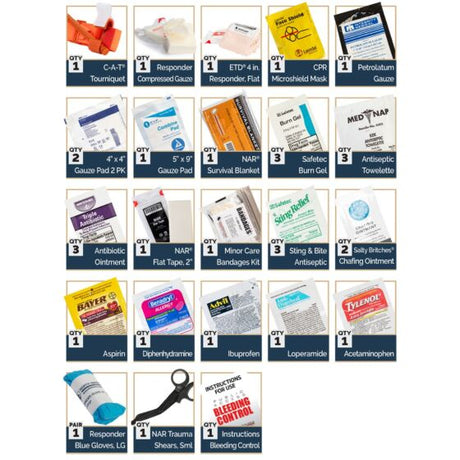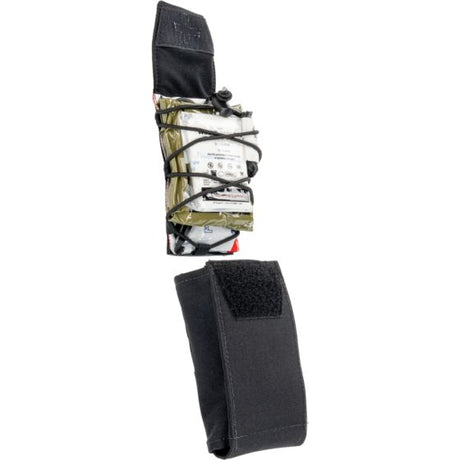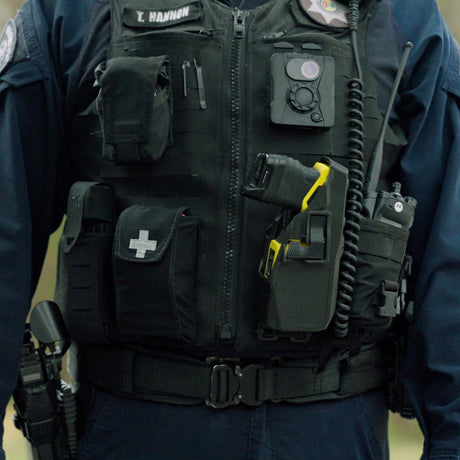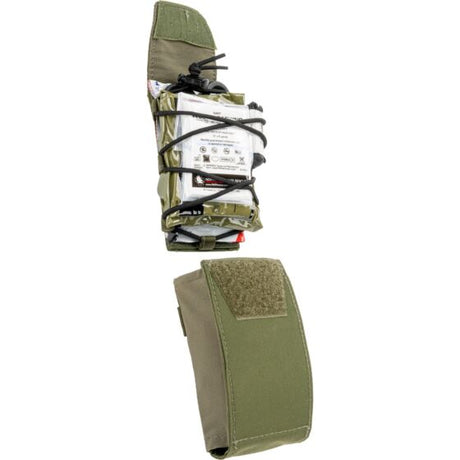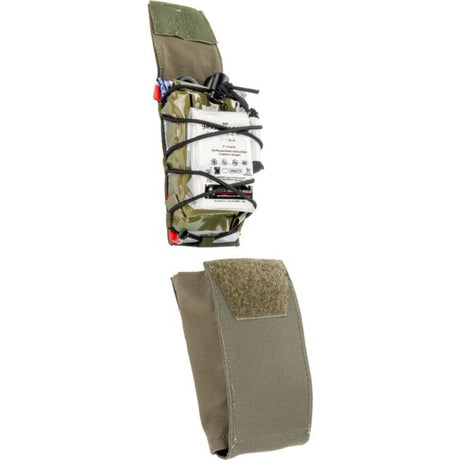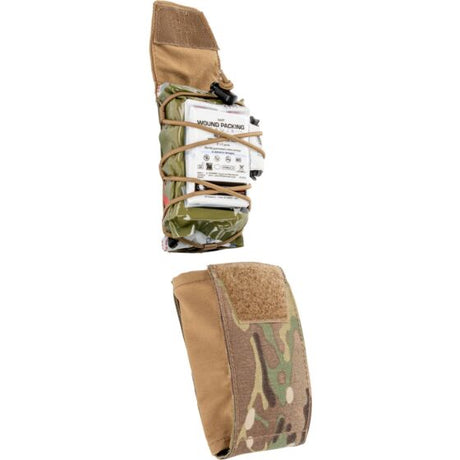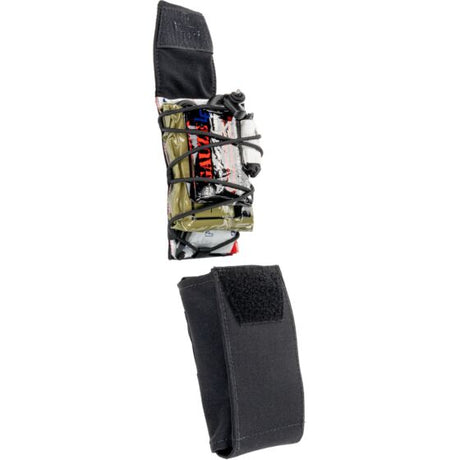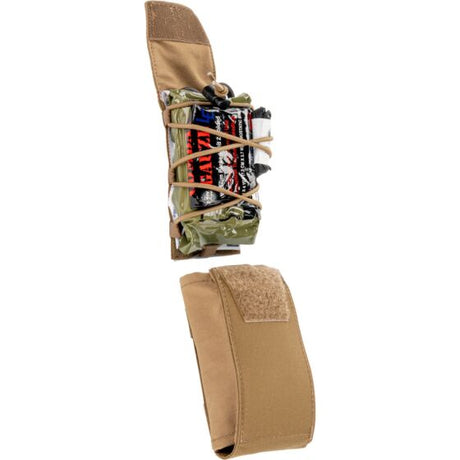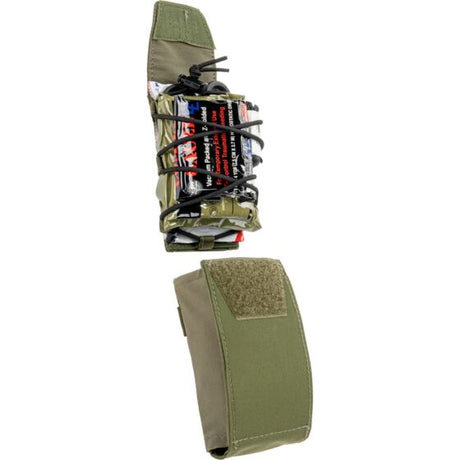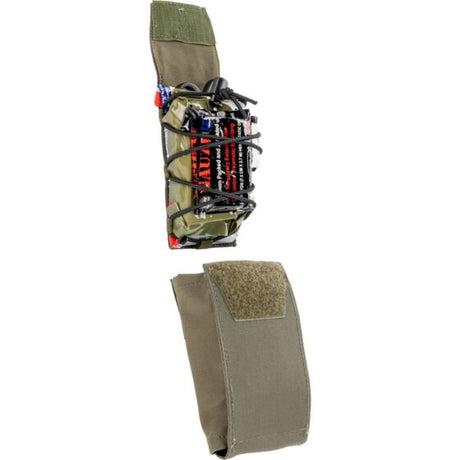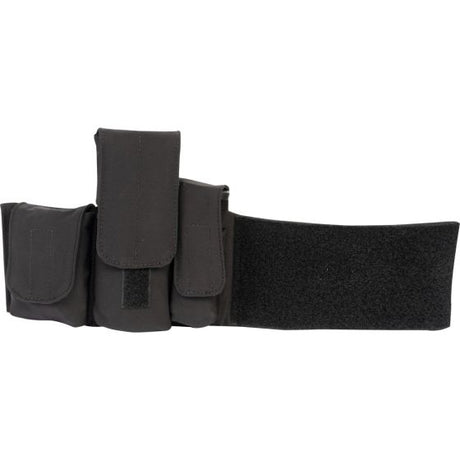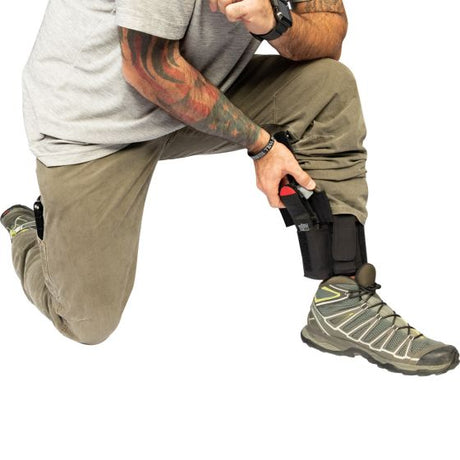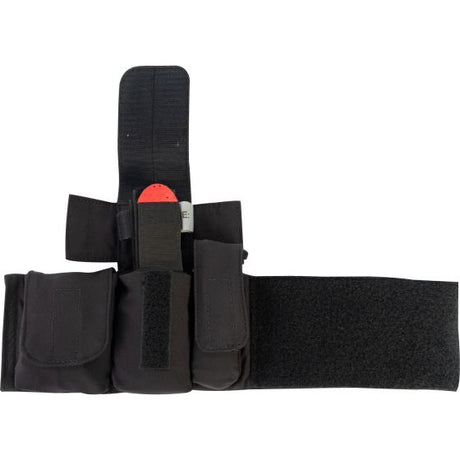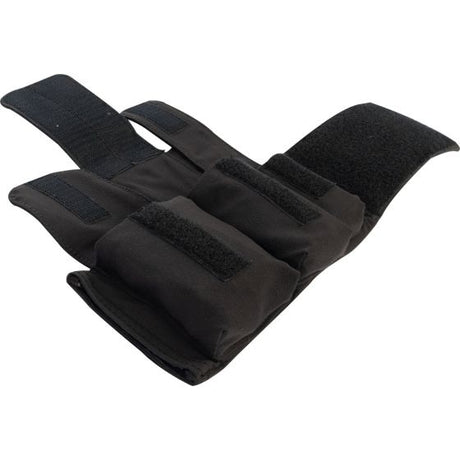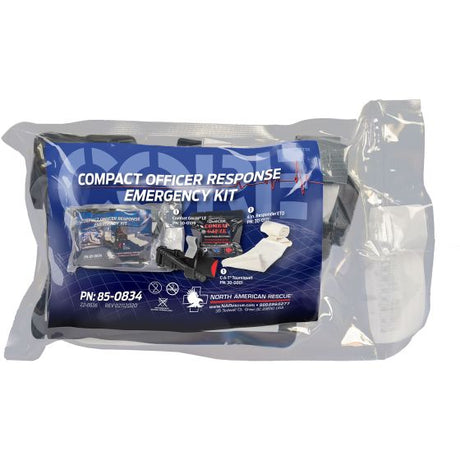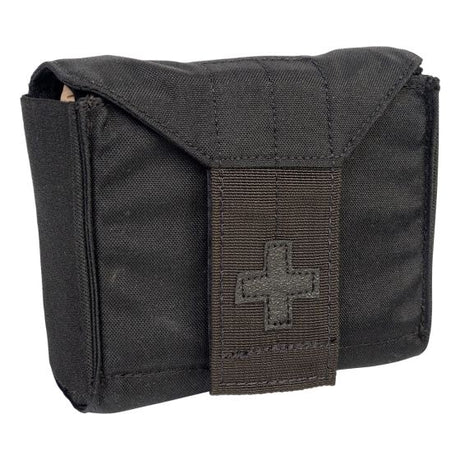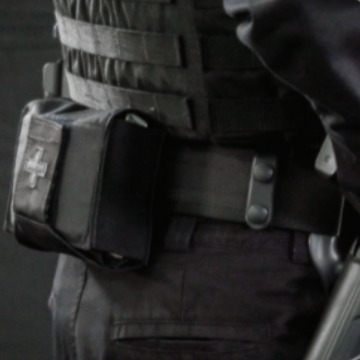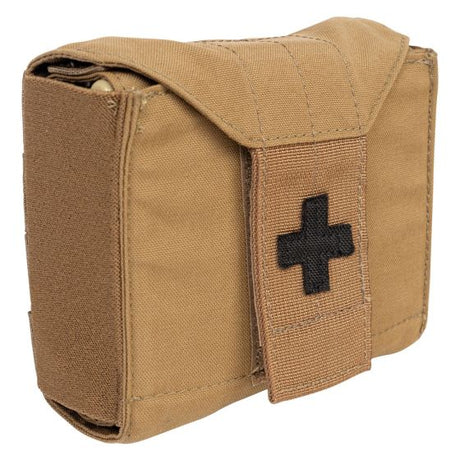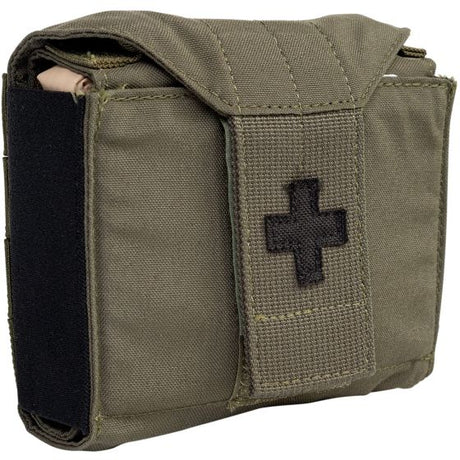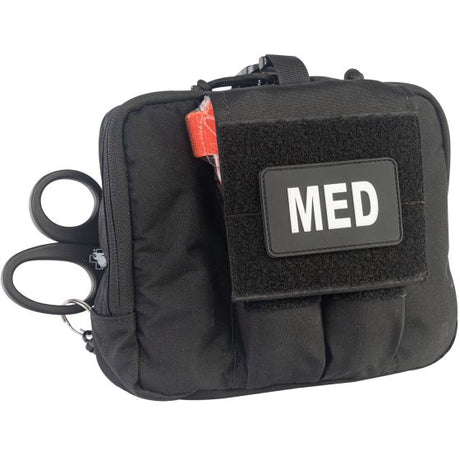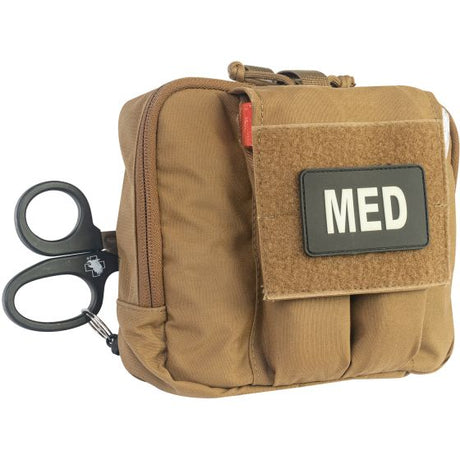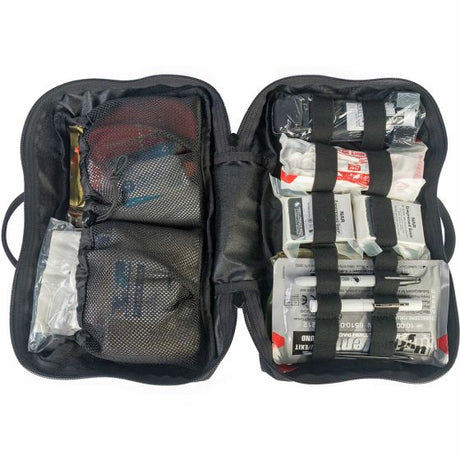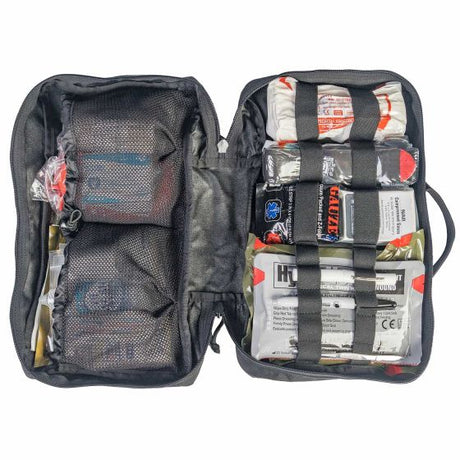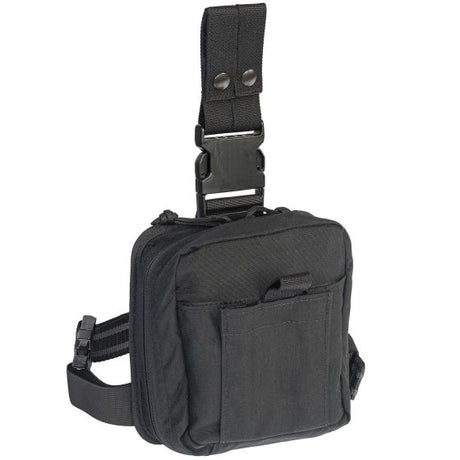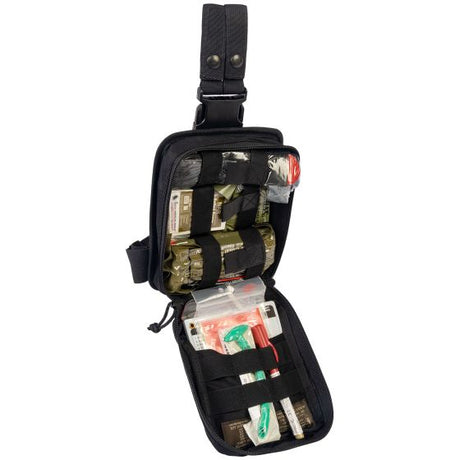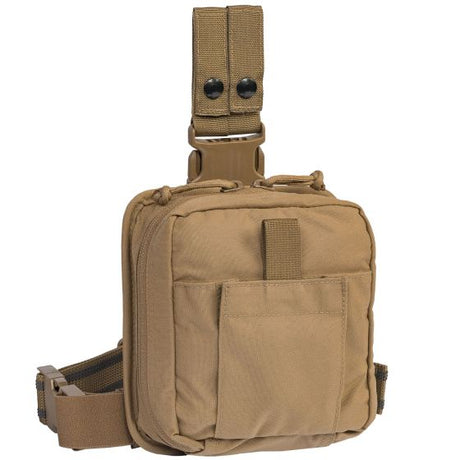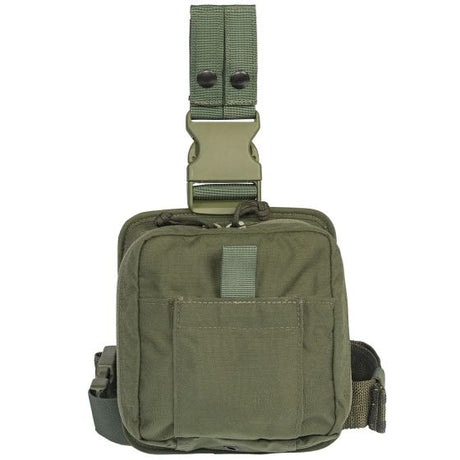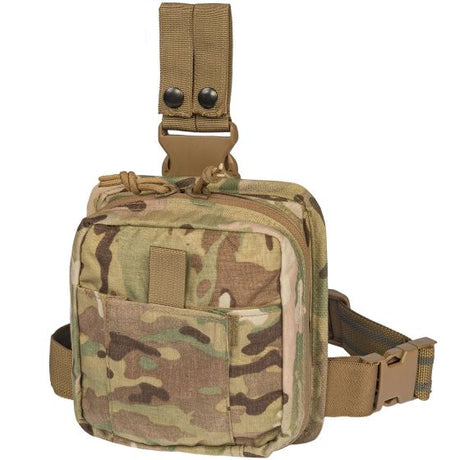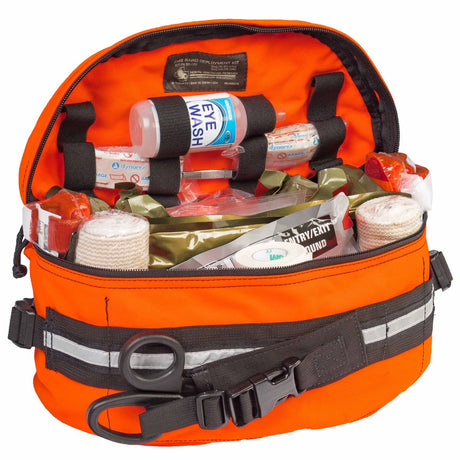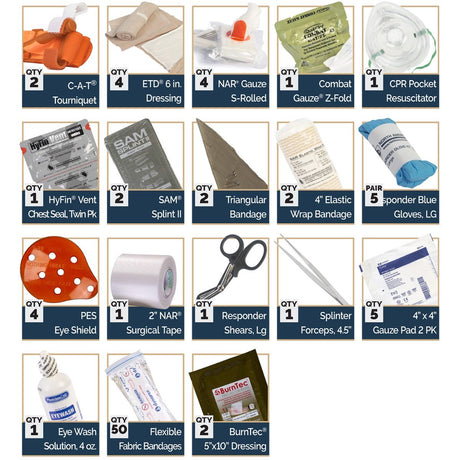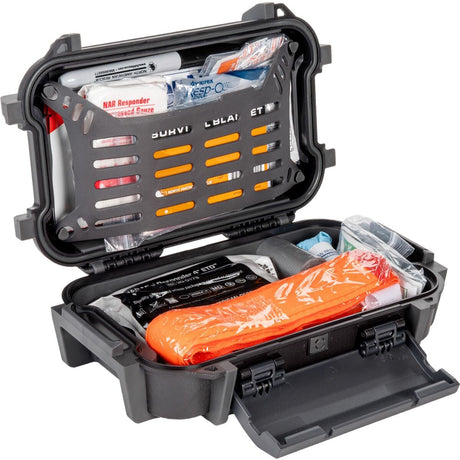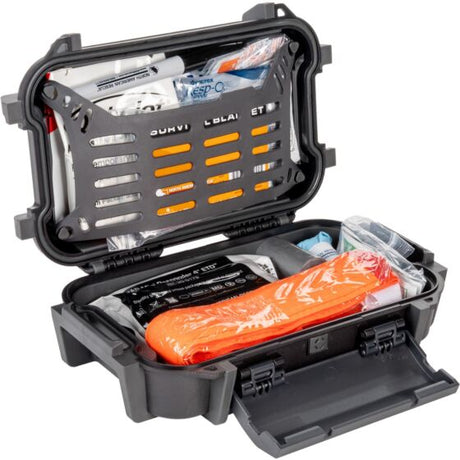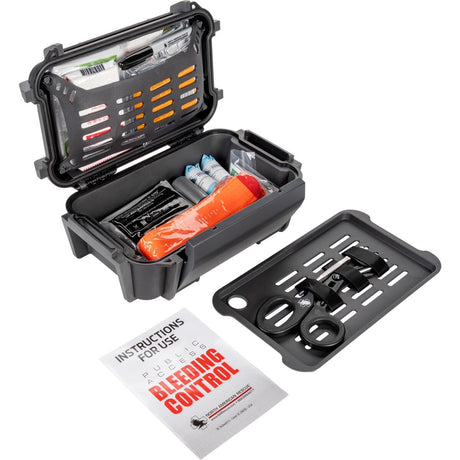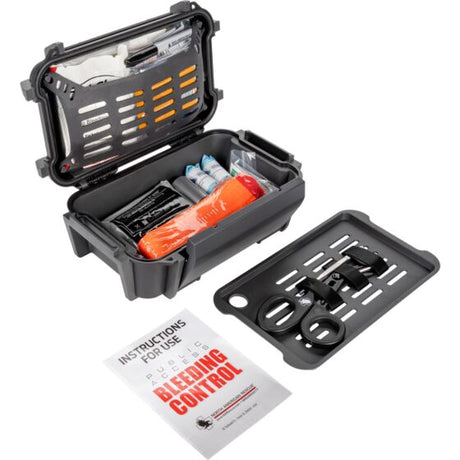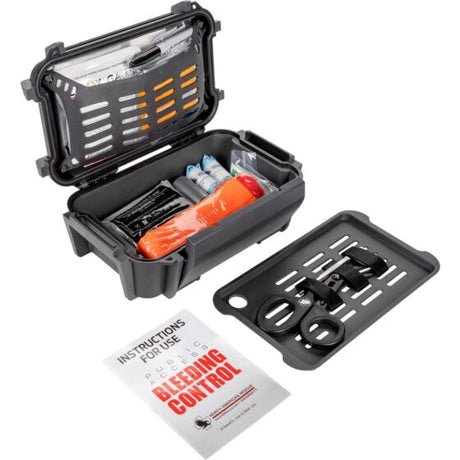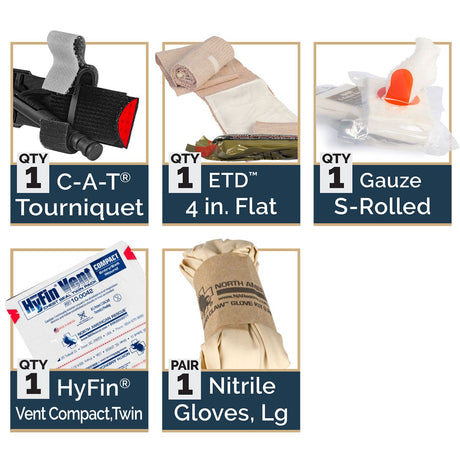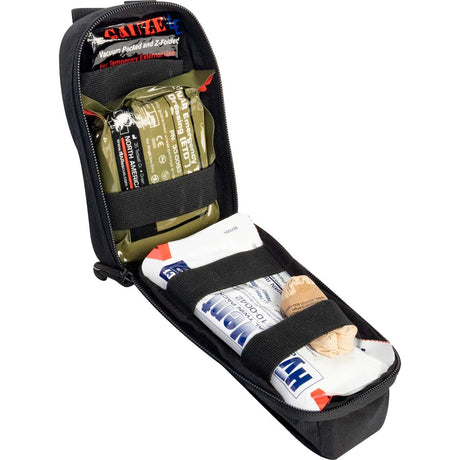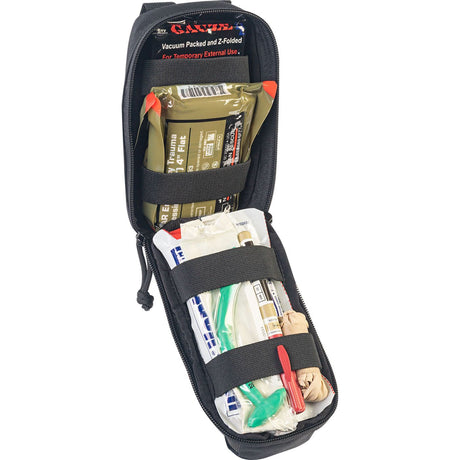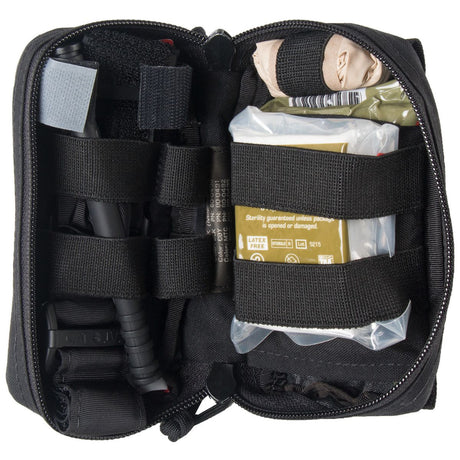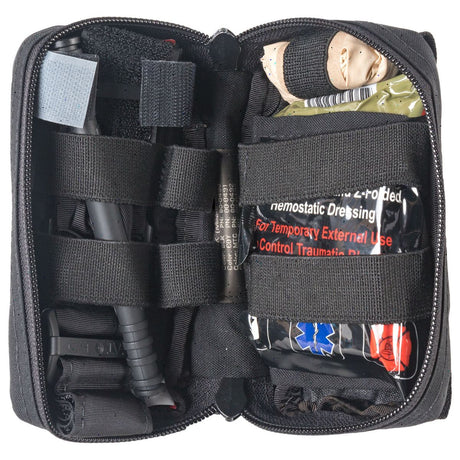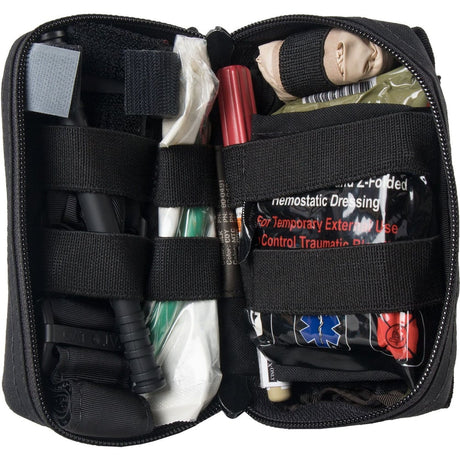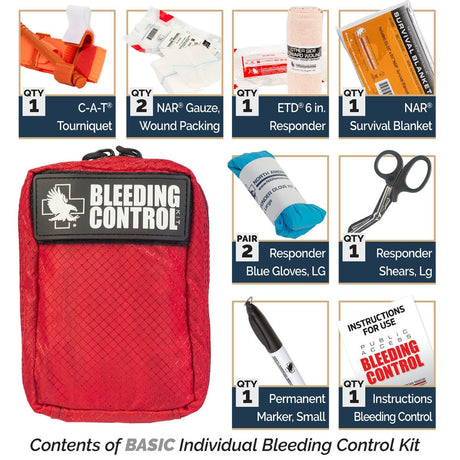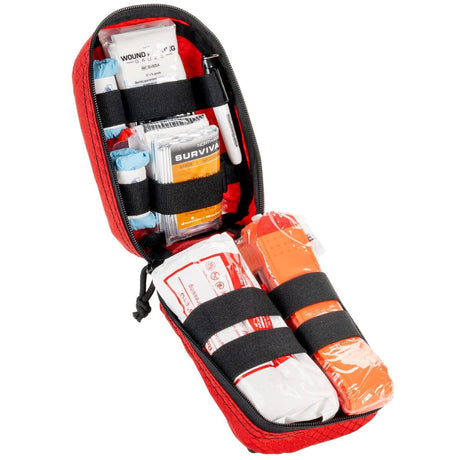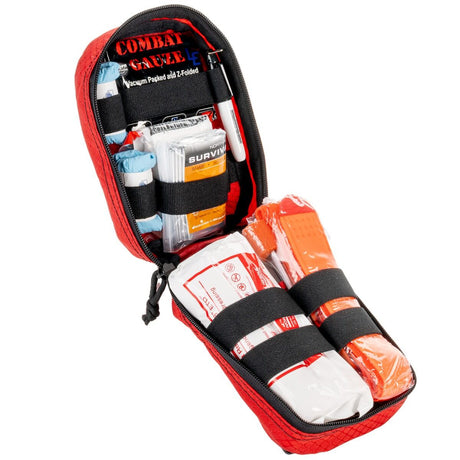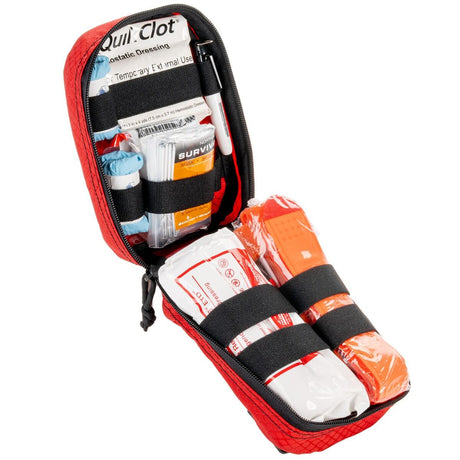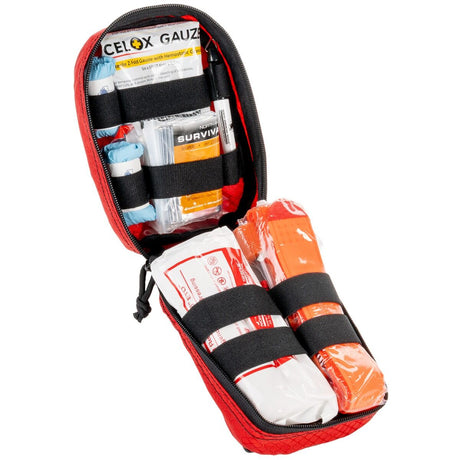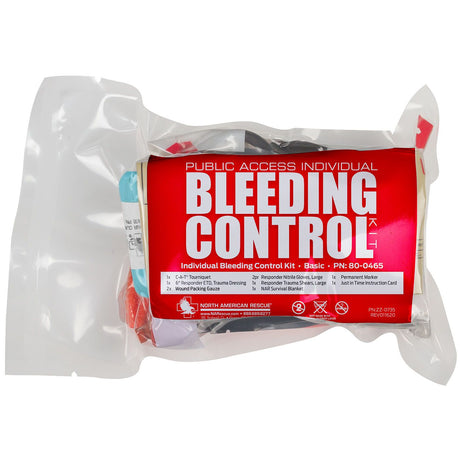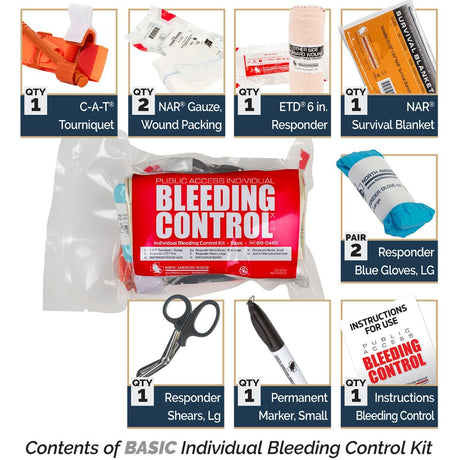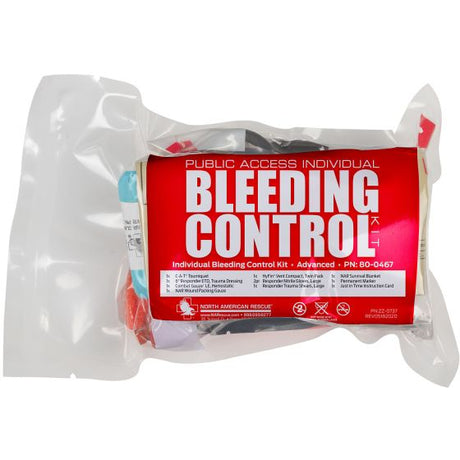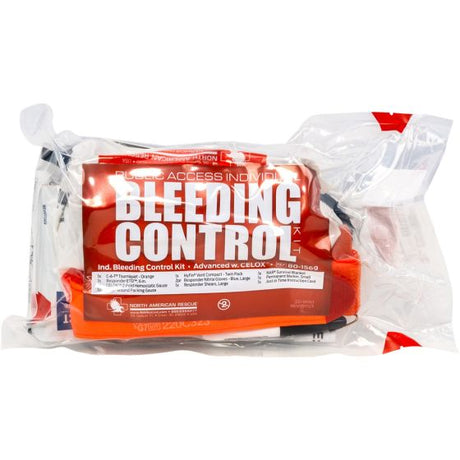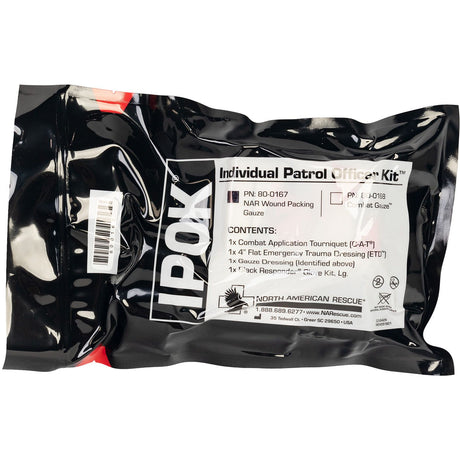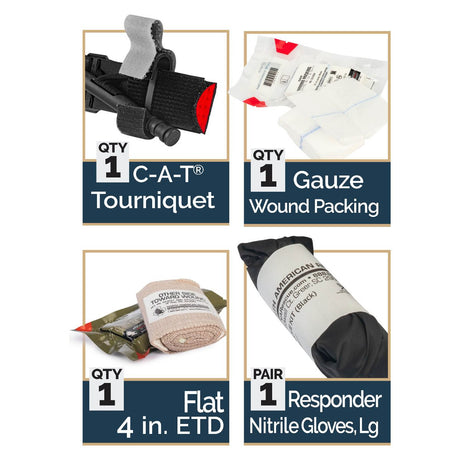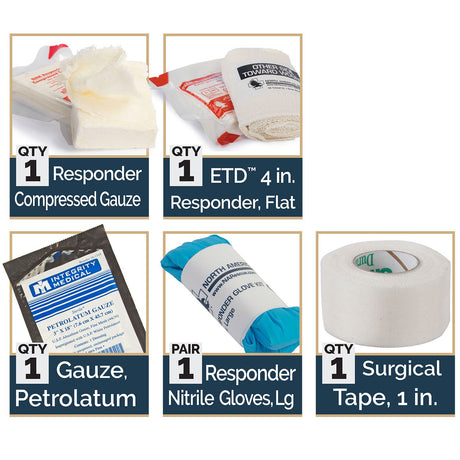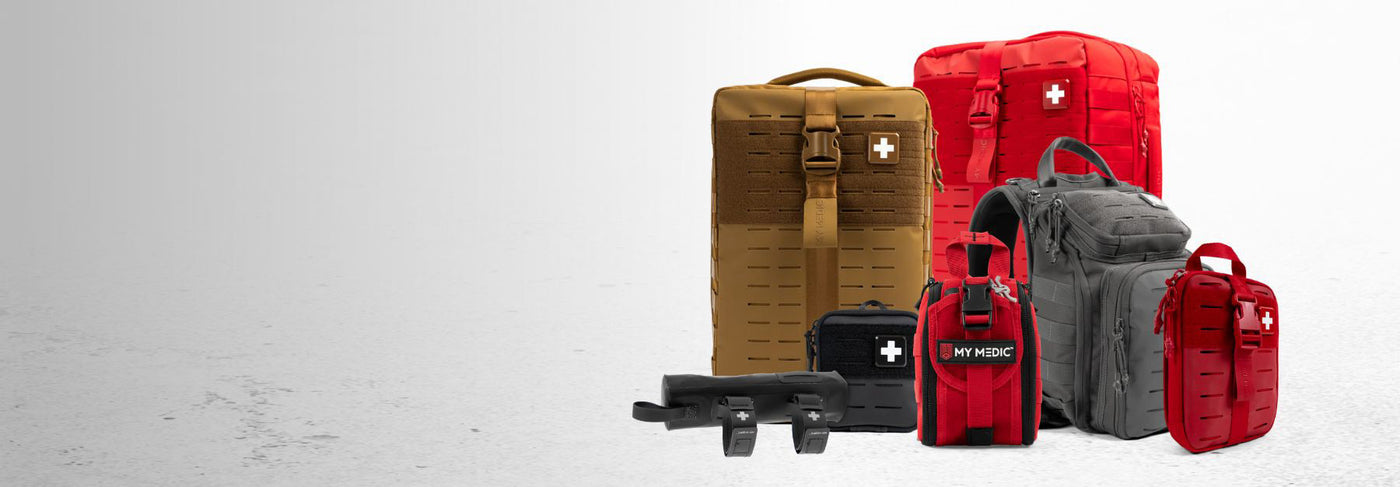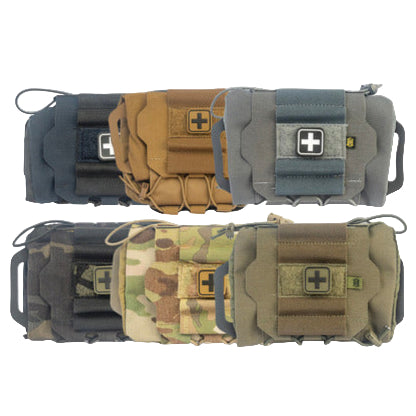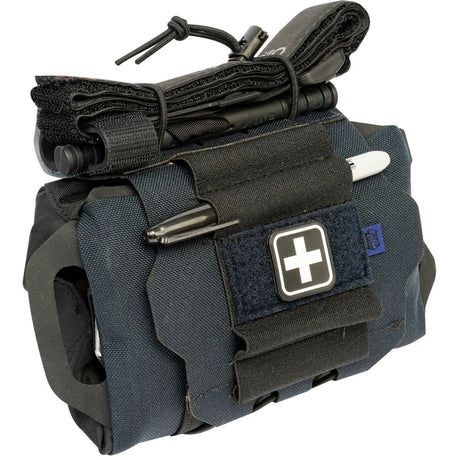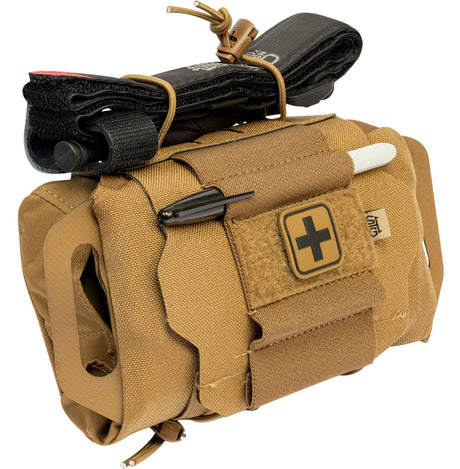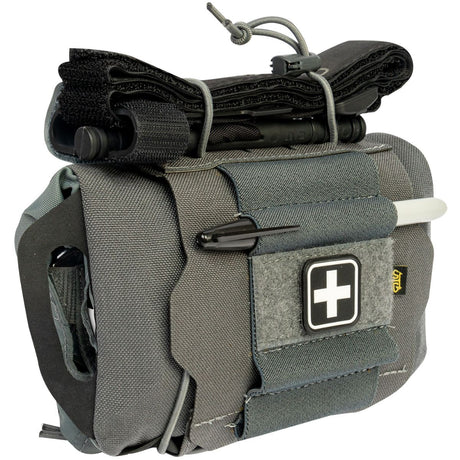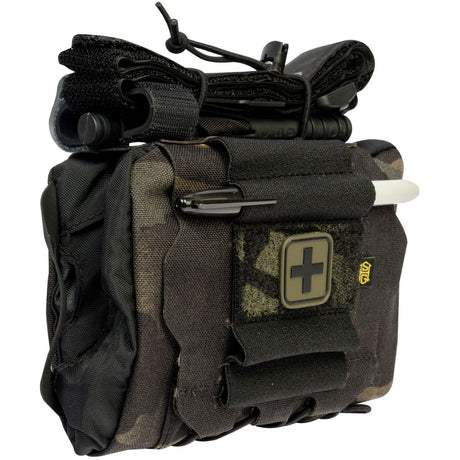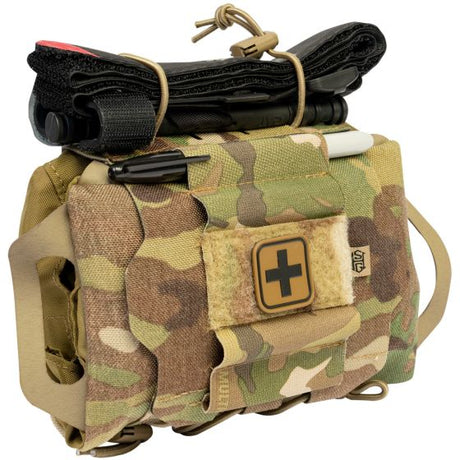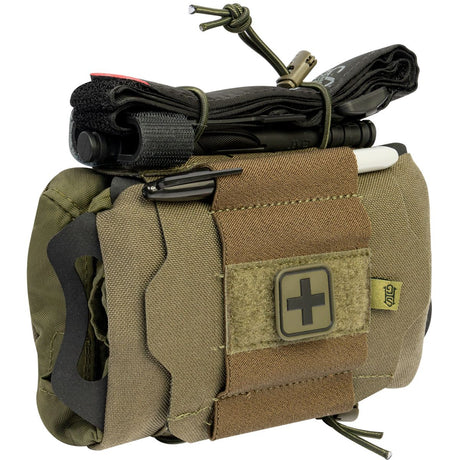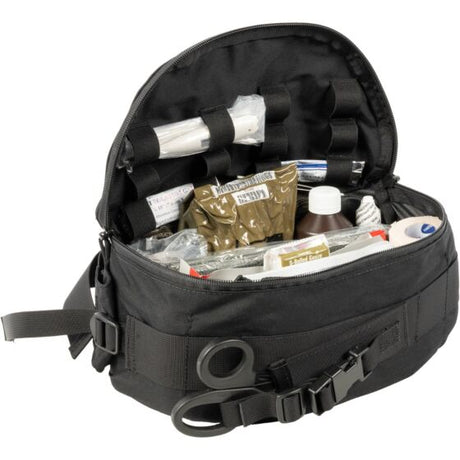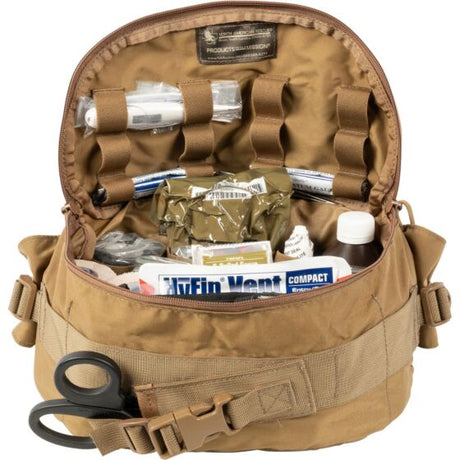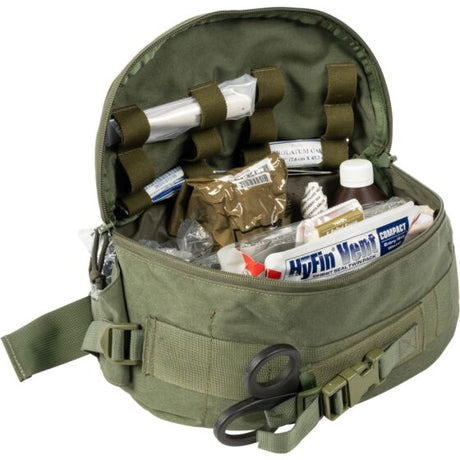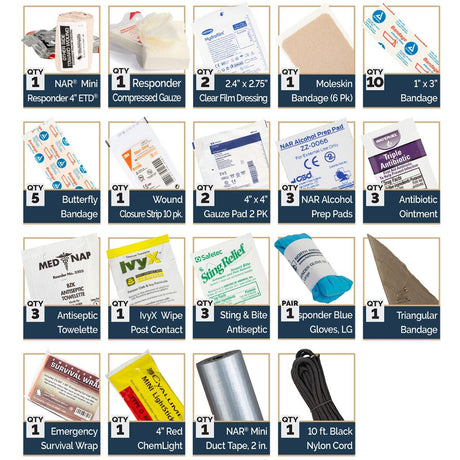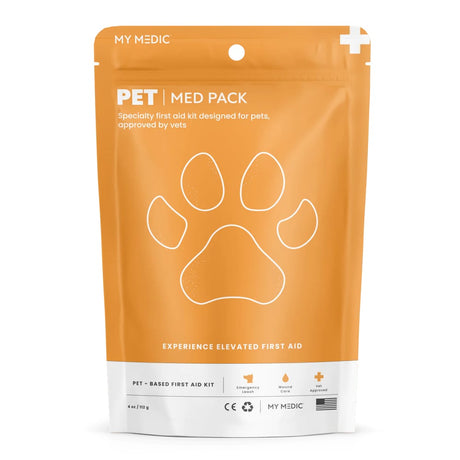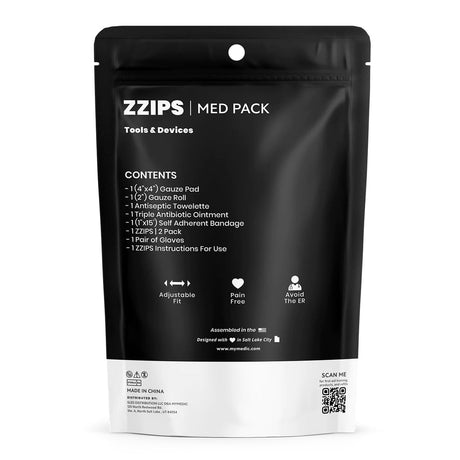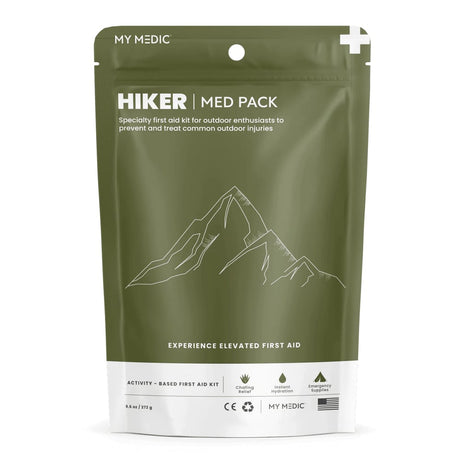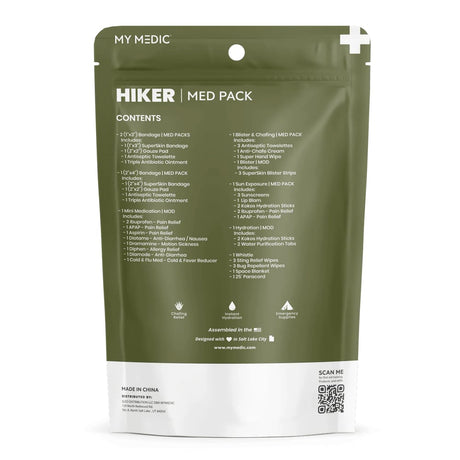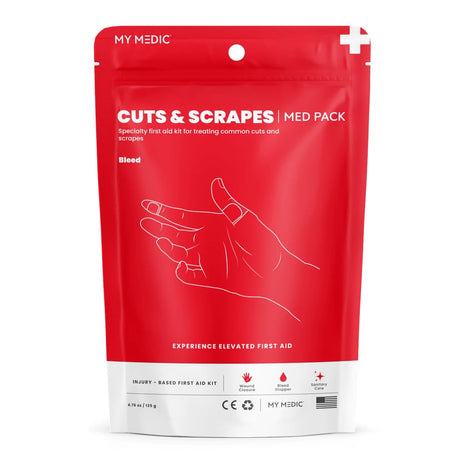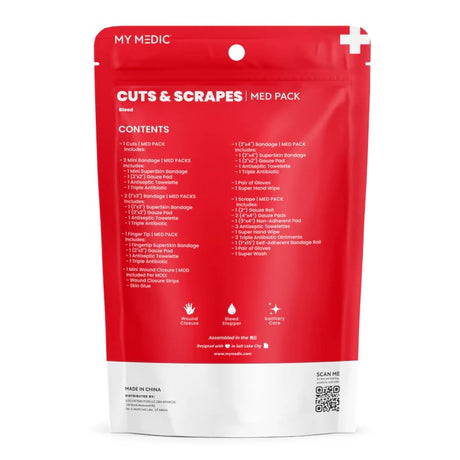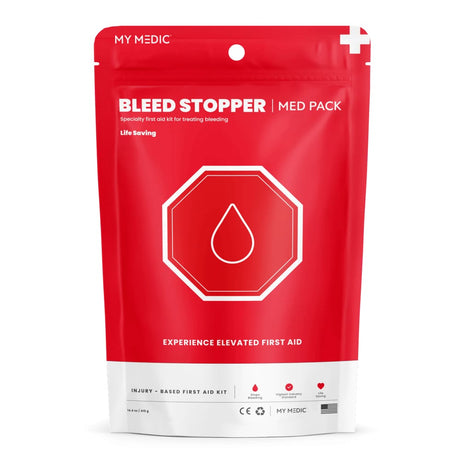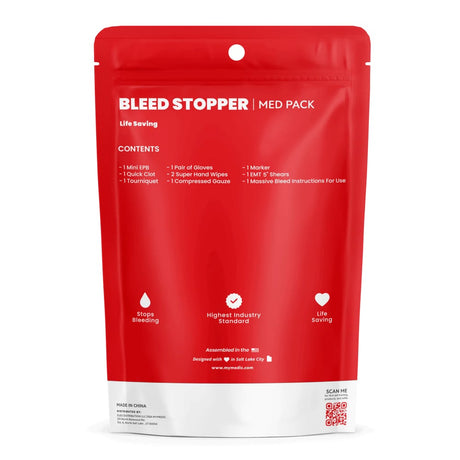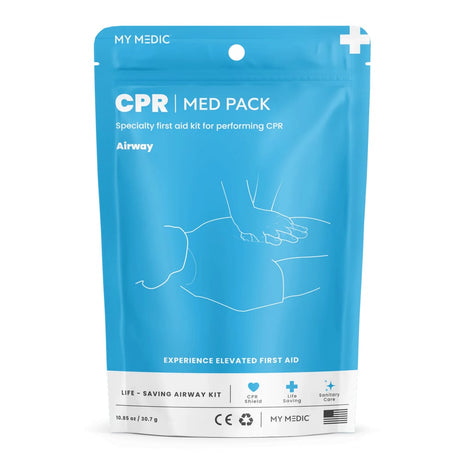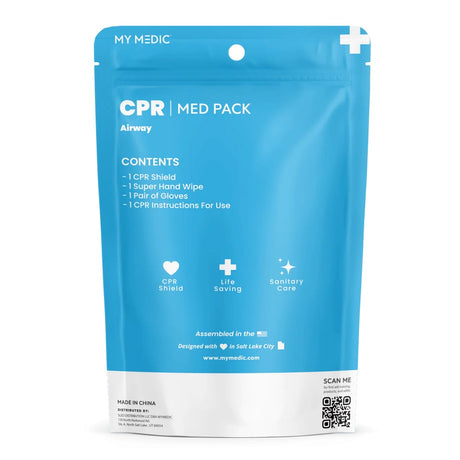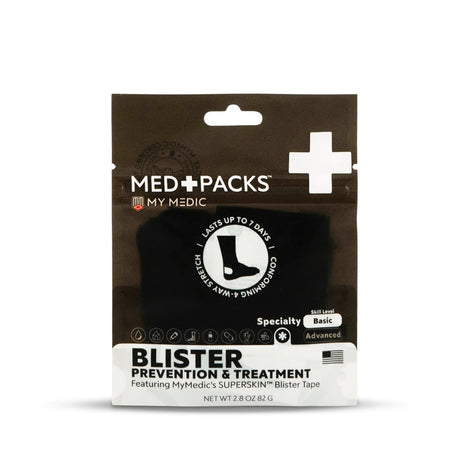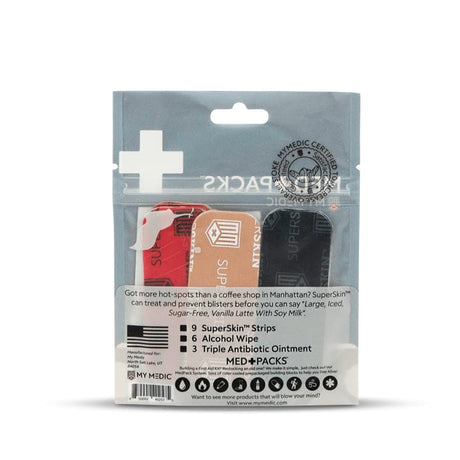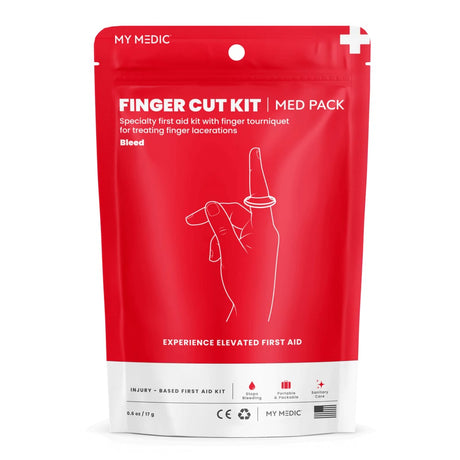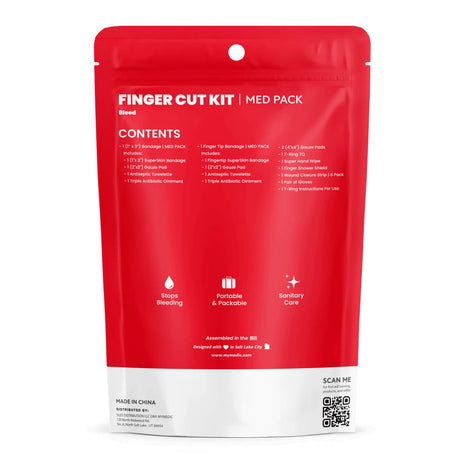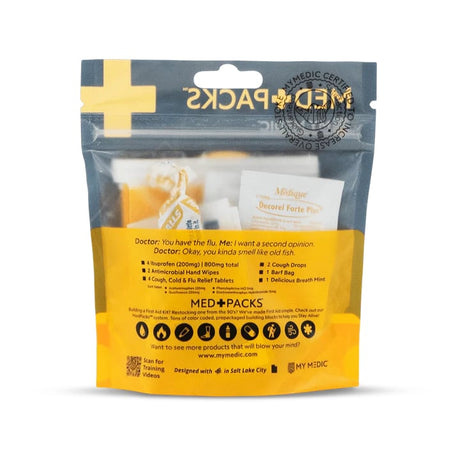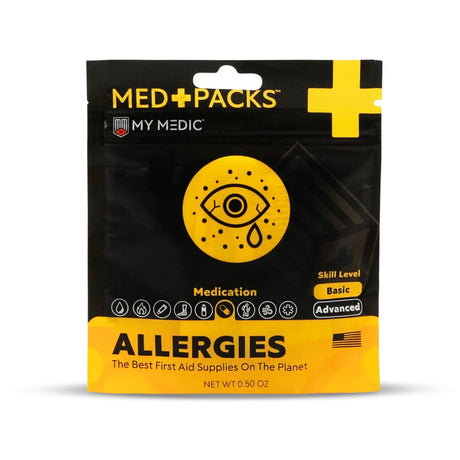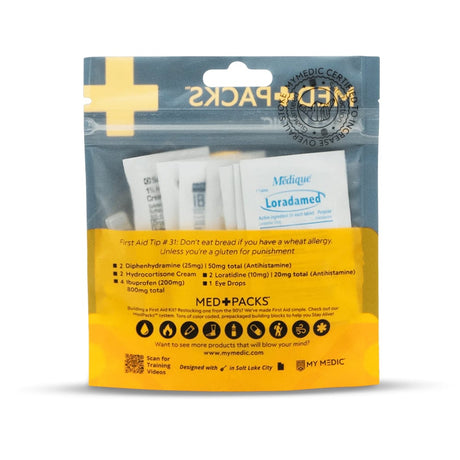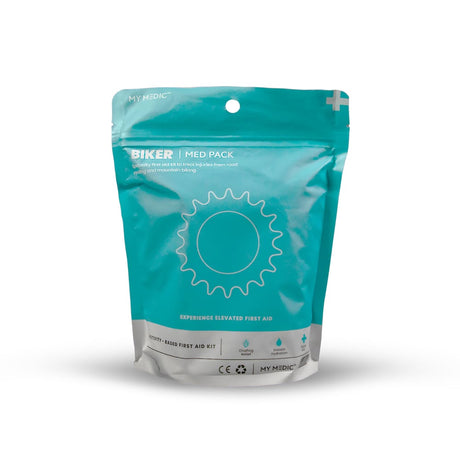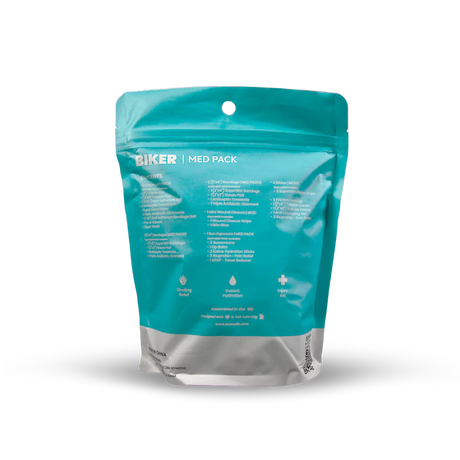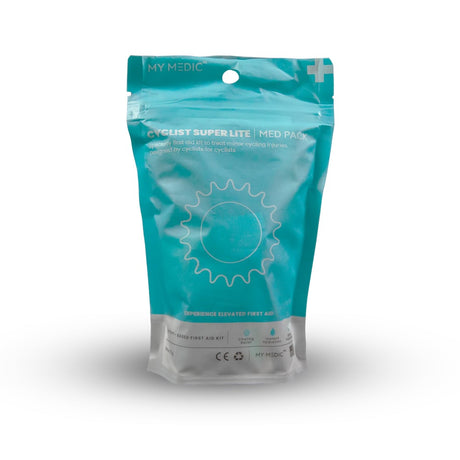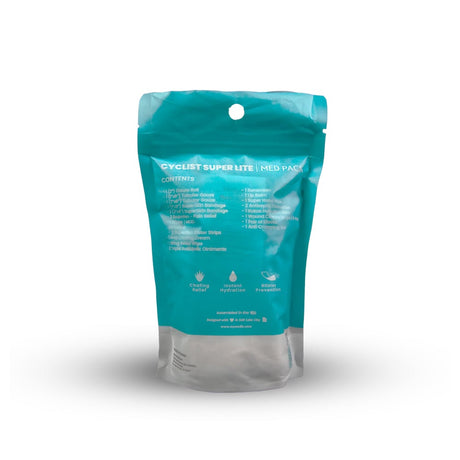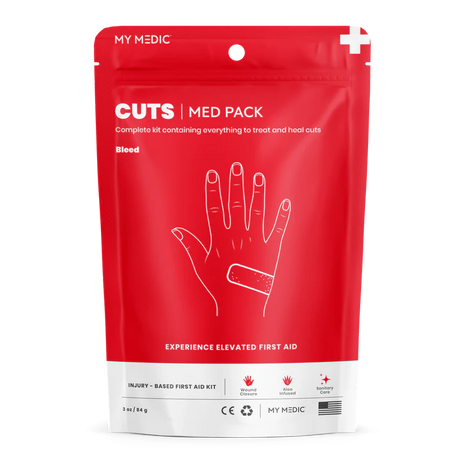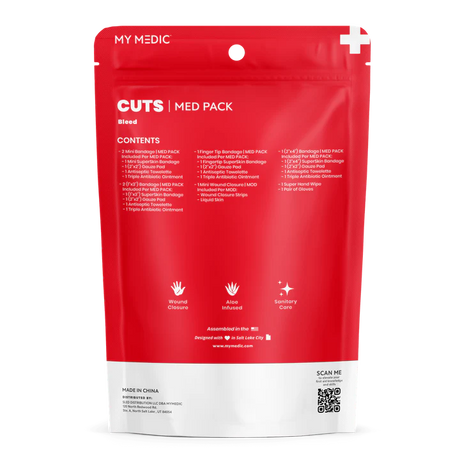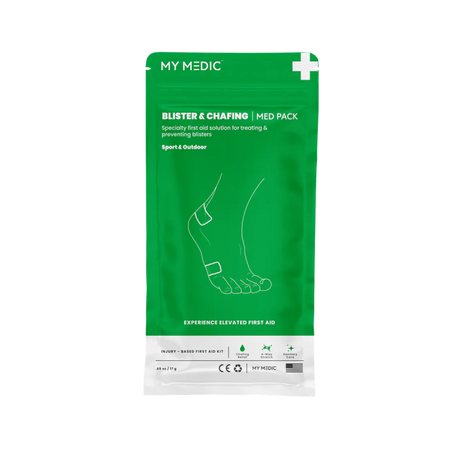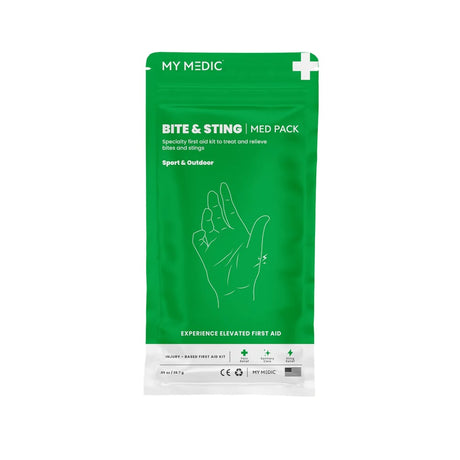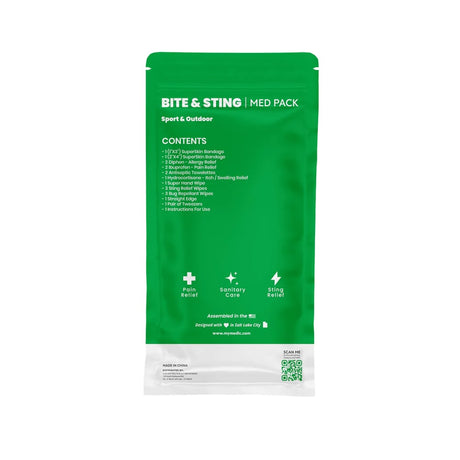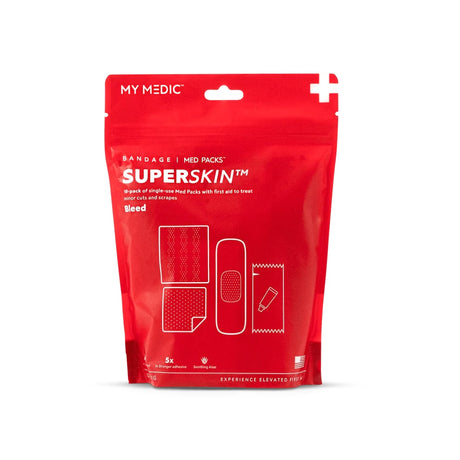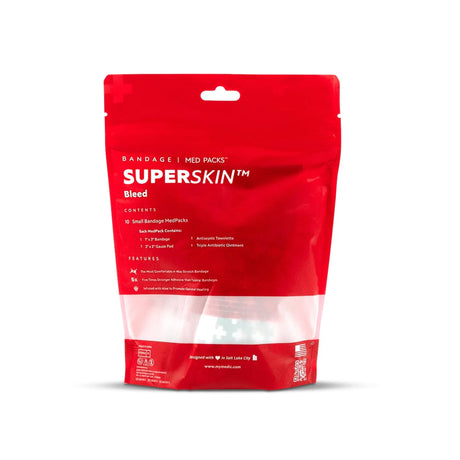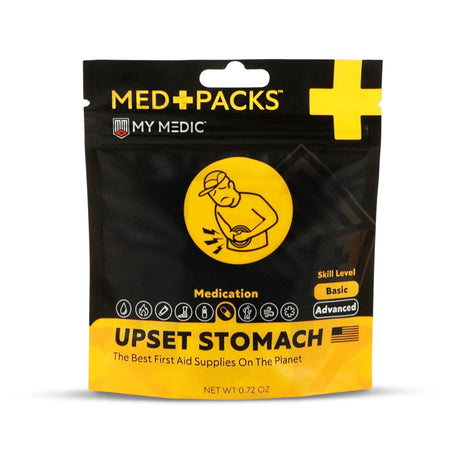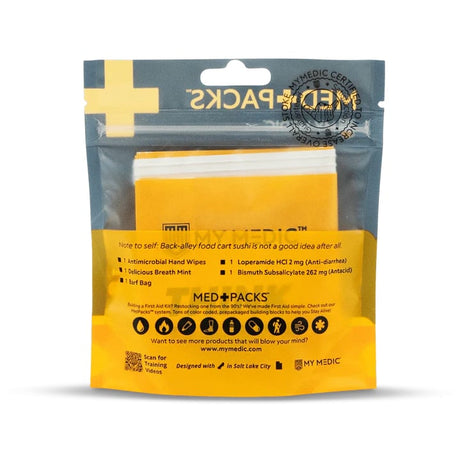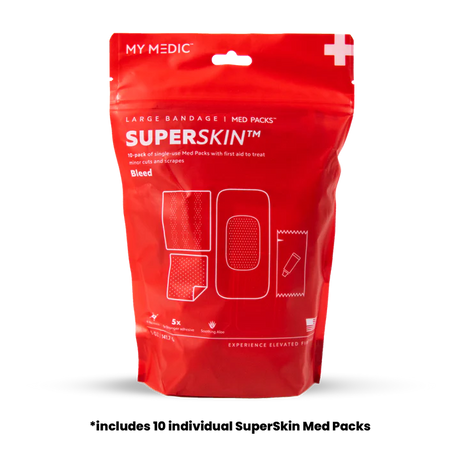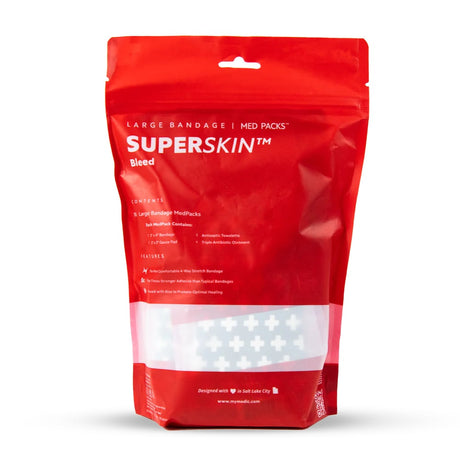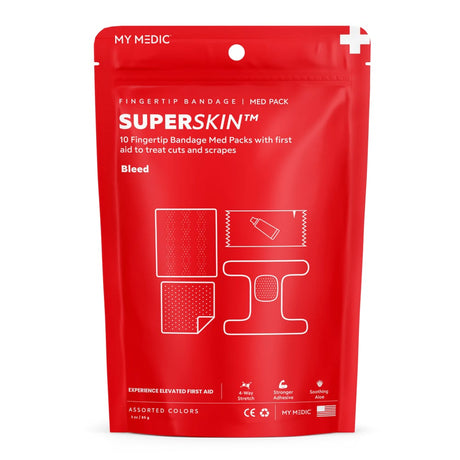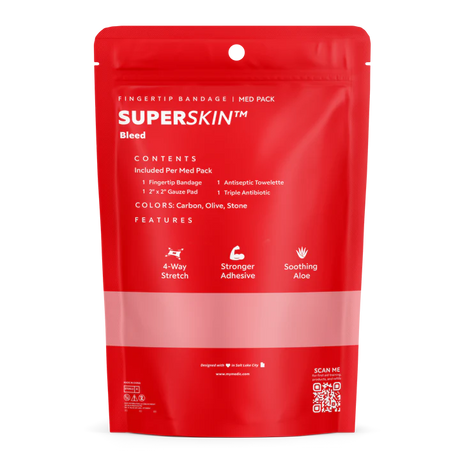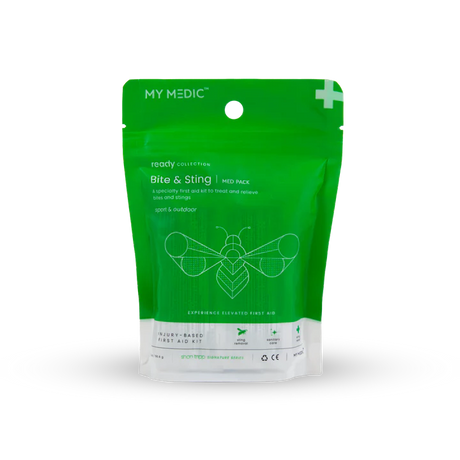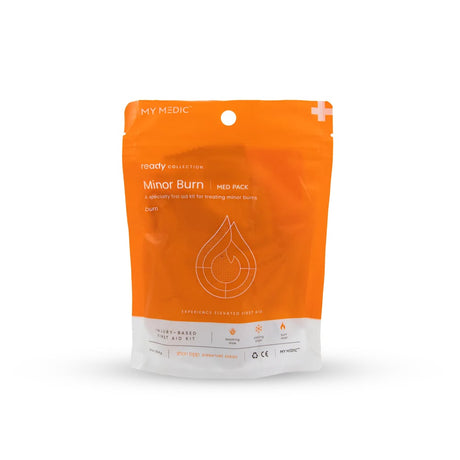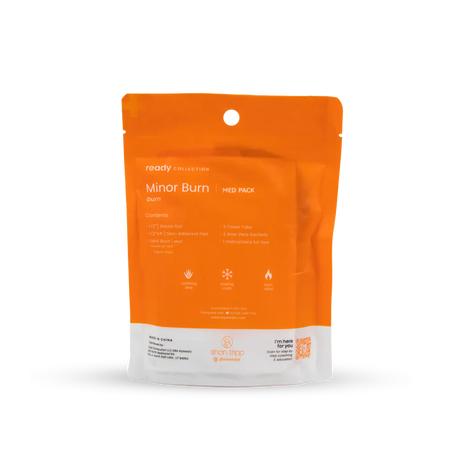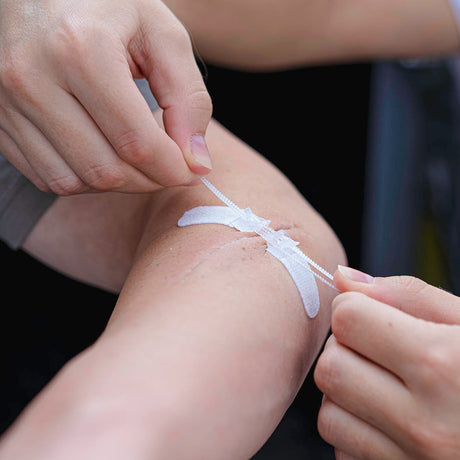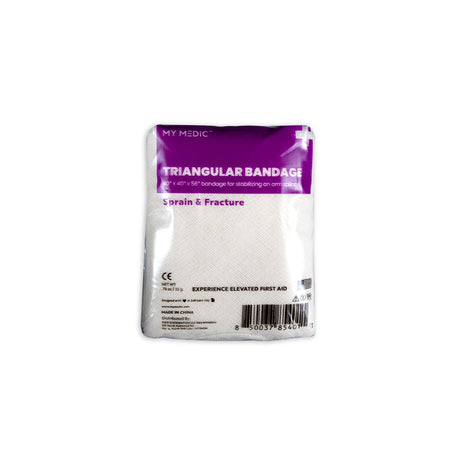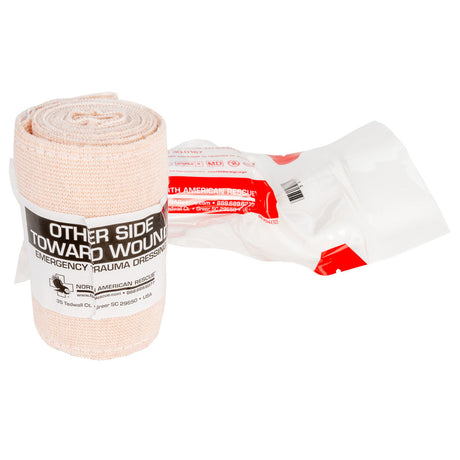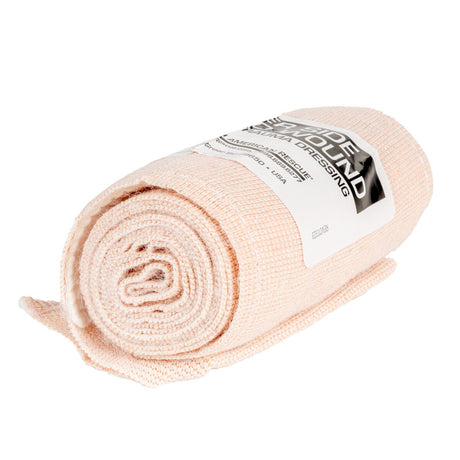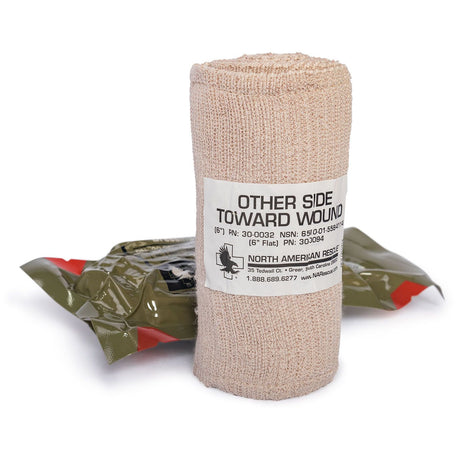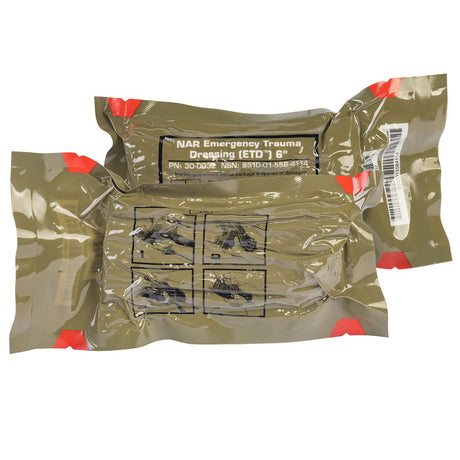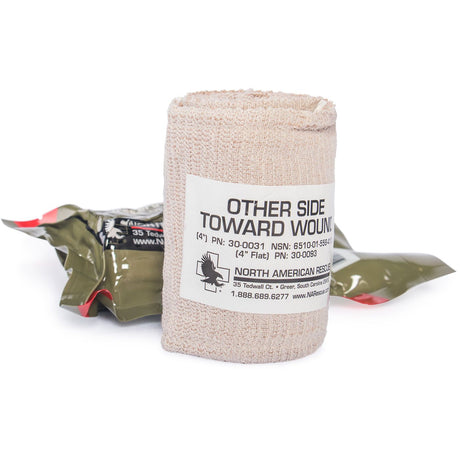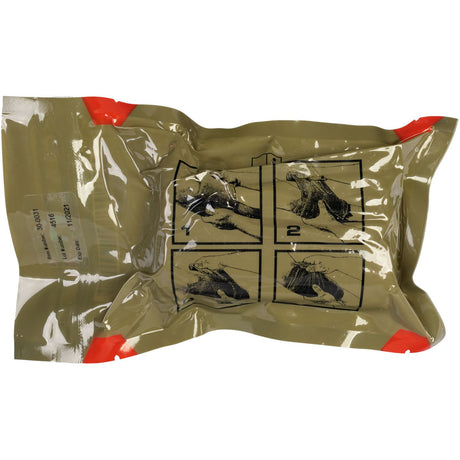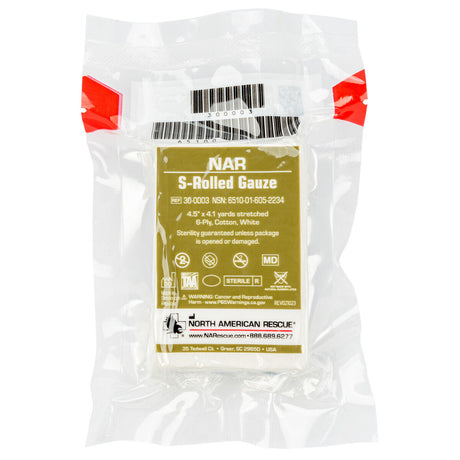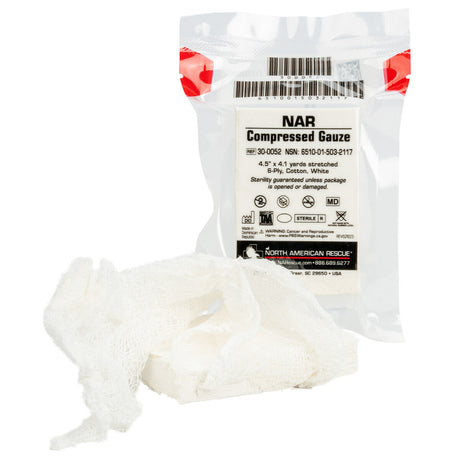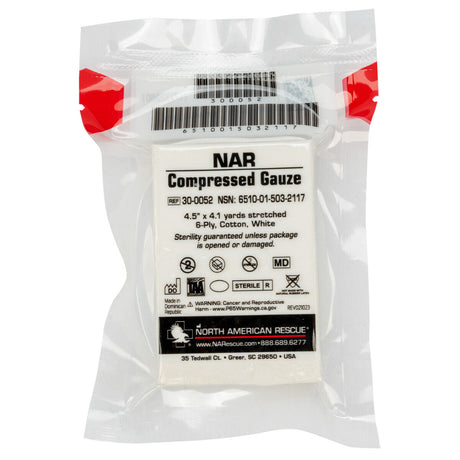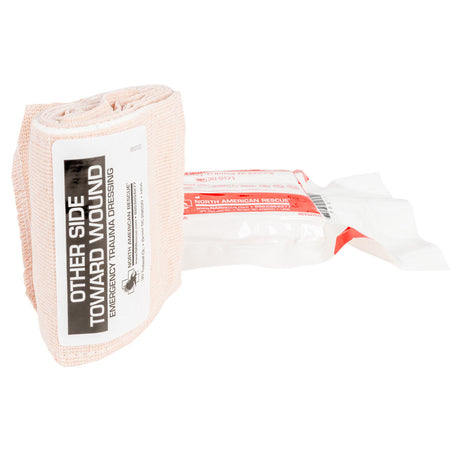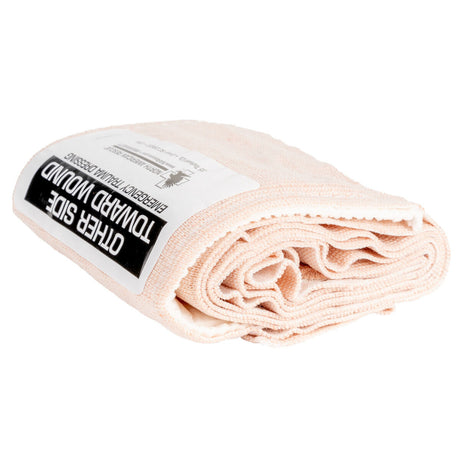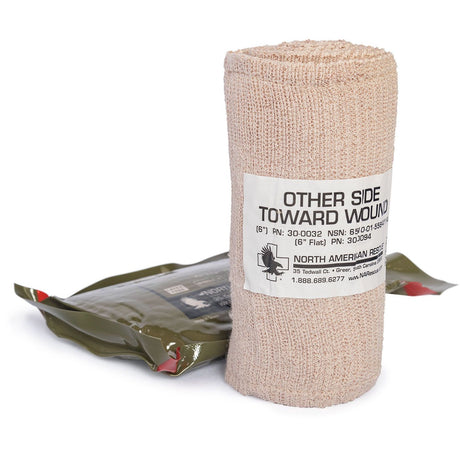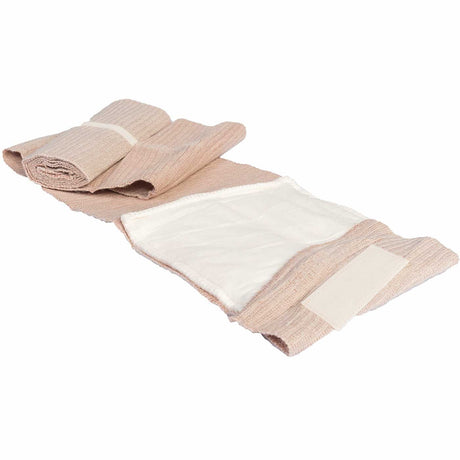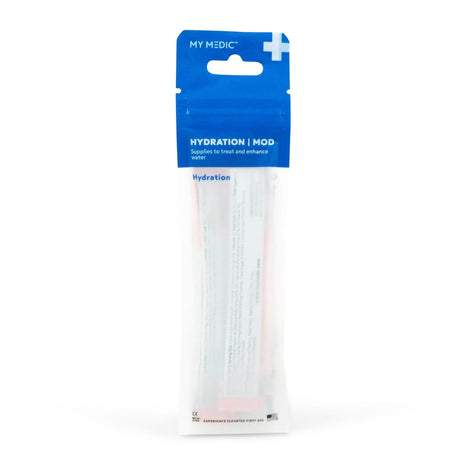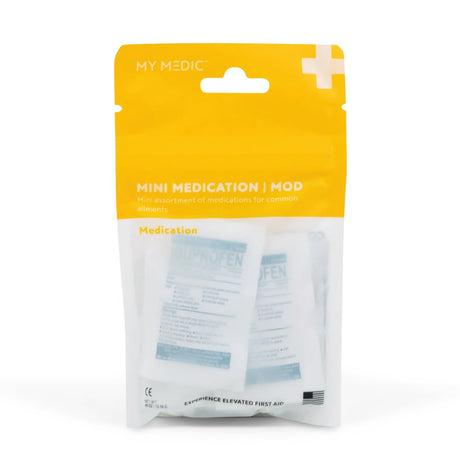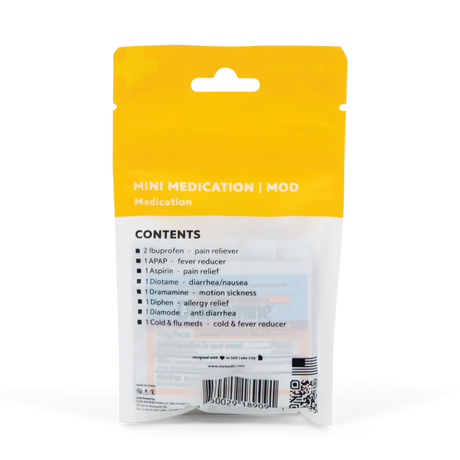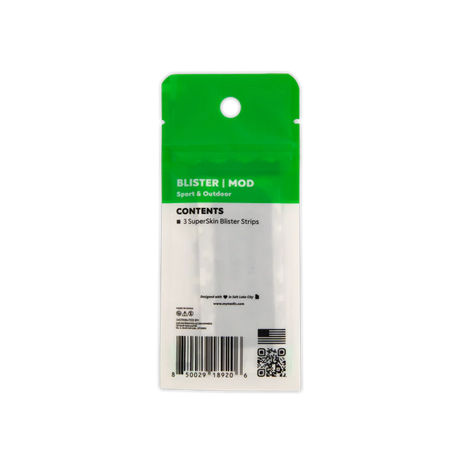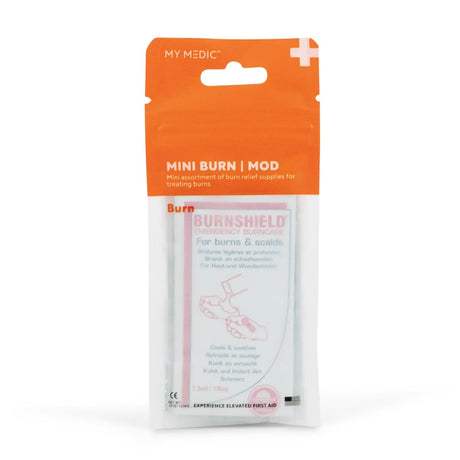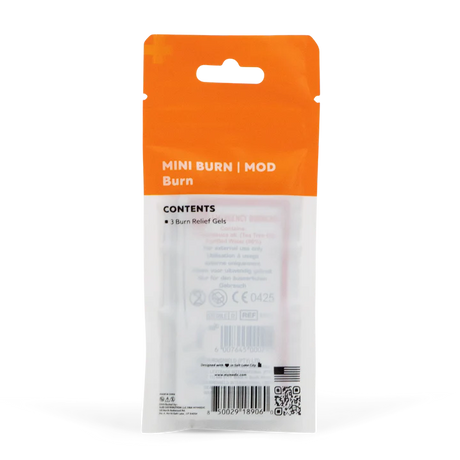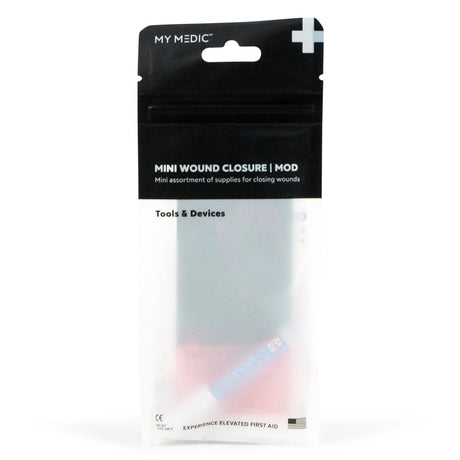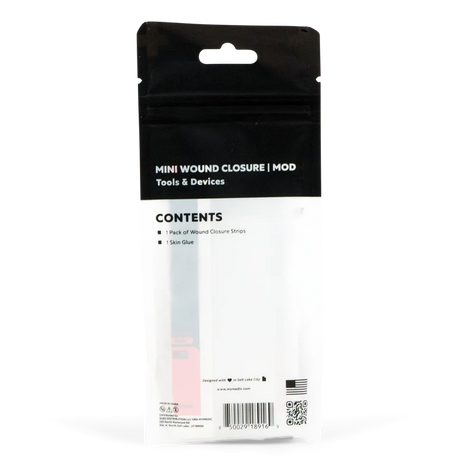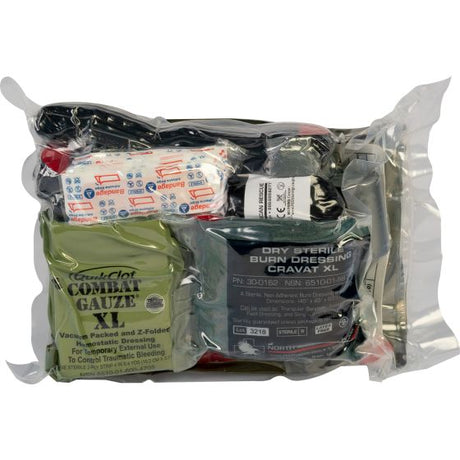First Aid & Trauma Kits
View allSpecialty Kits
View allMed Packs & Refill Kits
View allIndividual Supplies
View allMy Medic - Dynarex Triangular Bandage (40" x 40" x 56")
Regular price $149Unit price /UnavailableMy Medic – ZZIPS 2-Pack Wound Closure Strips
Regular price $1795Unit price /UnavailableMY MEDIC - Trauma First Aid Kit | TFAK
Regular price $16995Unit price /UnavailableNAR - Mini Trauma Sheet Kit with Medical Supplies
Regular price From $33499Unit price /UnavailableNAR - Reflex IFAK System Kit with TCCC Supplies
Regular price From $26449Unit price /UnavailableNorth American Rescue - USMC IFAK Resupply Kit
Regular price $34095Unit price /UnavailableNAR - K-9 Tactical Field Kit for Emergency Care
Regular price From $39549Unit price /UnavailableNAR - RUF Trauma Aid Kit with IFAK Supplies, Black
Regular price From $41995Unit price /UnavailableNAR - Tactical Operator Response Kit, Rapid Deployment
Regular price From $14699Unit price /UnavailableNorth American Rescue – Ready Every Day (RED) Kit – Personal
Regular price $12499Unit price /UnavailableNorth American Rescue – Mini Trauma Aid Kit (Mini-TAK)
Regular price From $10499Unit price /UnavailableNAR - EDC Ankle Trauma Kit with Tourniquet, Black
Regular price From $9249Unit price /UnavailableNAR - Compact Officer Emergency Response Kit
Regular price $8999Unit price /UnavailableNAR - Lumbar Compact First Aid Kit, MOLLE-Compatible
Regular price From $8899Unit price /UnavailableNAR - Rescue Task Force Chest Pouch Medical Kit
Regular price $27195Unit price /UnavailableNorth American Rescue – Patrol Vehicle Trauma Kit
Regular price From $27495Unit price /Unavailable
First Aid & Trauma Care FAQ - Emergency Medical Preparedness
What is an IFAK and why do I need one for emergency preparedness?
What is an IFAK and why do I need one for emergency preparedness?
An IFAK (Individual First Aid Kit) is a compact trauma kit designed to treat life-threatening injuries during the critical minutes before professional medical help arrives. Unlike basic first aid kits that address minor cuts and scrapes, IFAKs contain essential trauma supplies for controlling severe bleeding, managing airways, and treating shock—the leading preventable causes of death in emergencies. North American Rescue IFAKs like the Mini-TAK and RUF Kit include tourniquets, hemostatic gauze, chest seals, and pressure dressings specifically for penetrating trauma, severe lacerations, and catastrophic bleeding. Every prepared household, vehicle, and bug-out bag should include an IFAK because seconds matter in trauma situations where 911 response may be delayed by natural disasters, remote locations, or mass casualty events.
What's the difference between a first aid kit and a trauma kit?
What's the difference between a first aid kit and a trauma kit?
First aid kits address common minor injuries like cuts, burns, sprains, and everyday medical needs with bandages, antiseptic, pain relievers, and basic supplies. Trauma kits focus exclusively on life-threatening emergencies requiring immediate intervention to prevent death from exsanguination (bleeding out), airway compromise, or tension pneumothorax. The North American Rescue Tactical Operator Response Kit (TORK) and Mini Trauma Sheet Kit contain advanced supplies like CAT tourniquets, combat gauze with hemostatic agents, nasopharyngeal airways, chest seals, and emergency trauma dressings. Trauma kits assume injuries where minutes determine survival—gunshot wounds, stabbings, severe vehicle accidents, or industrial injuries. For comprehensive emergency preparedness, you need both: trauma kits for immediate life-saving intervention and first aid kits for treating secondary injuries and illness after the critical period.
What essential supplies should be in every trauma kit?
What essential supplies should be in every trauma kit?
Every effective trauma kit must contain the "Big 3" bleeding control items: a tourniquet (preferably CAT Gen 7 or SOF-T Wide), hemostatic gauze (QuikClot Combat Gauze or Celox), and a pressure dressing (Israeli bandage or Emergency Trauma Dressing). Additional critical supplies include chest seals for sucking chest wounds, compressed gauze for wound packing, medical gloves, trauma shears, and nasopharyngeal airways. The North American Rescue Individual Bleeding Control Kits provide these essentials in compact packages starting at $66.99. For comprehensive trauma care, upgrade to kits like the NAR RUF Kit or Maritime Assault Compact IFAK that include multiple hemostatic agents, airways, and redundant bleeding control tools. Remember that having supplies means nothing without training—take a Stop the Bleed or Tactical Combat Casualty Care course to use trauma equipment effectively under stress.
Why choose North American Rescue (NAR) trauma kits over other brands?
Why choose North American Rescue (NAR) trauma kits over other brands?
North American Rescue is the gold standard for tactical trauma care, supplying military, law enforcement, and EMS worldwide with proven life-saving equipment. NAR manufactures the ubiquitous CAT tourniquet used by U.S. military forces and invented products like Combat Gauze that have saved thousands of lives in combat and civilian emergencies. NAR trauma kits contain genuine NAR-manufactured components tested under extreme conditions rather than budget substitutes with questionable efficacy. The quality difference matters when seconds count—NAR tourniquets, hemostatic agents, and chest seals perform reliably under stress while inferior products may fail catastrophically. Products like the NAR Mini-TAK ($104.99), RUF Kit ($419.95), and TORK ($146.99) represent professional-grade equipment trusted by those who face trauma regularly. For serious emergency preparedness, NAR provides peace of mind that your trauma supplies will function when needed most.
What does MOLLE-compatible mean for first aid kits?
What does MOLLE-compatible mean for first aid kits?
MOLLE-compatible (Modular Lightweight Load-carrying Equipment) first aid kits like the NAR Lumbar Compact First Aid Kit feature webbing or attachment straps that integrate with tactical backpacks, plate carriers, battle belts, and vehicle organizers using the standardized MOLLE attachment system. This allows secure mounting of medical kits exactly where needed—on your belt during outdoor activities, inside vehicle MOLLE panels for rapid access, or integrated with bug-out bags and tactical gear. MOLLE compatibility ensures your IFAK moves with you rather than bouncing in a backpack or getting buried under gear during emergencies. The system's modularity lets you position trauma supplies optimally for your specific use case, whether that's everyday carry on a belt, vehicle storage, or tactical operations. For preppers and outdoor enthusiasts, MOLLE-compatible medical kits provide professional-level organization and immediate accessibility during high-stress situations.
How do I choose the right size trauma kit for my needs?
How do I choose the right size trauma kit for my needs?
Trauma kit selection depends on your specific scenario, skill level, and number of potential casualties. Personal everyday carry kits like the North American Rescue Ready Every Day (RED) Kit ($124.99) or MY MEDIC EDC ($129.95) provide essential bleeding control in compact packages for single-casualty incidents in normal daily activities. Tactical/outdoor kits like the Mini-TAK ($104.99) or RUF Kit ($419.95) offer more comprehensive supplies for remote activities where 911 response is delayed. Vehicle trauma kits such as the NAR Patrol Vehicle Trauma Kit ($274.95) contain supplies for multiple casualties and extended care scenarios during vehicle accidents or family emergencies. Home/property kits like the NAR Tactical Operator Response Kit ($146.99) or I-ROK ruggedized kit ($184.95+) provide maximum capability for treating family members or neighbors during disasters. Start with a personal IFAK for everyday carry, then add vehicle and home kits to create layered medical preparedness.
Do I need medical training to use trauma kits effectively?
Do I need medical training to use trauma kits effectively?
Yes, medical training is essential for effective trauma kit use—equipment alone saves no one. Without training, people freeze, apply tourniquets incorrectly, waste critical time, or cause additional harm. At minimum, complete a Stop the Bleed course (free 90-minute course offered nationwide) teaching basic hemorrhage control with tourniquets, wound packing, and pressure dressings. This training directly applies to North American Rescue trauma kit contents and dramatically increases survival odds. For advanced skills, pursue Tactical Combat Casualty Care (TCCC), Wilderness First Responder, or EMT certification covering airway management, chest seals, and shock treatment. Practice regularly with training versions of equipment to build muscle memory—stress destroys complex thinking, so simple repetitive skills save lives. Consider the MY MEDIC MyFAK Wound Closure Kit ($149.95) only if you have appropriate medical training for suturing. Train first, buy equipment second, then practice regularly to maintain proficiency.
What is hemostatic gauze and when should it be used?
What is hemostatic gauze and when should it be used?
Hemostatic gauze like QuikClot Combat Gauze contains clotting agents (kaolin or chitosan) that dramatically accelerate blood coagulation at wound sites where tourniquets cannot be applied—neck, groin, abdomen, or junction areas between torso and extremities. When faced with severe arterial bleeding from these "junctional" zones, pack the wound firmly with hemostatic gauze, pushing deep to the bleeding source, then apply direct pressure for 3-5 minutes while the clotting agents work. Standard gauze merely absorbs blood; hemostatic gauze actively stops hemorrhage through chemical means. North American Rescue trauma kits include Combat Gauze or similar hemostatic products proven in military trauma research. Use hemostatic gauze only for severe life-threatening bleeding—it's expensive ($30-40 per package) and unnecessary for minor wounds controllable with direct pressure. Proper wound packing technique requires training to be effective and avoid complications.
How often should I replace trauma kit supplies and check expiration dates?
How often should I replace trauma kit supplies and check expiration dates?
Trauma kit maintenance requires regular inspection and rotation of expired components. Check your NAR trauma kits every 6 months for expiration dates on sterile supplies—hemostatic gauze typically expires in 3-5 years, chest seals in 3 years, and compressed gauze in 5 years. Tourniquets don't expire but inspect for UV damage, cracked windlass rods, or weakened straps if stored in vehicles or outdoor locations. Replace components before expiration to ensure effectiveness during emergencies. Consider purchasing NAR Med Packs and refill kits to replace expired items economically rather than buying complete new kits. The NAR Compressed Gauze ($3.95), Emergency Trauma Dressings ($9.49), and individual supplies section allows targeted replacement of used or expired components. Store trauma kits in cool, dry locations away from direct sunlight and extreme temperatures. Keep detailed inventory lists noting expiration dates and restock critical items before they expire—expired hemostatic agents lose clotting effectiveness, potentially failing during life-threatening hemorrhage.
Can I use trauma kits for family members or bystanders legally?
Can I use trauma kits for family members or bystanders legally?
Good Samaritan laws in all 50 states provide legal protection for laypeople who render emergency aid in good faith during life-threatening situations, including using trauma kits like North American Rescue IFAKs on injured parties. These laws protect you from civil liability when providing reasonable emergency care, even if outcomes are negative, as long as you're not grossly negligent or reckless. You're legally and morally justified using trauma supplies on family members, coworkers, or strangers during emergencies where delay means death. However, wound closure supplies like the MY MEDIC MyFAK Wound Closure Kit ($149.95) enter grey legal areas without appropriate medical credentials—stick to bleeding control, airway management, and pressure dressings covered in Stop the Bleed training. Document your actions, get consent when possible ("I'm trained in bleeding control, may I help you?"), and call 911 immediately. Your North American Rescue Individual Bleeding Control Kit might save a life at a car accident, active shooter event, or disaster—don't hesitate to act within your training level.
What's the difference between vacuum-sealed and standard trauma kits?
What's the difference between vacuum-sealed and standard trauma kits?
Vacuum-sealed trauma kits like the NAR Individual Bleeding Control Kit (Vacuum Sealed, $66.99) compress contents into ultra-compact packages by removing all air, making them ideal for everyday carry in pockets, glove boxes, or small bag compartments where space is critical. Once opened, vacuum-sealed kits can't be resealed to original size. Standard nylon bag kits like the same bleeding control kit in red nylon ($83.99) offer easier access, ability to repack after inspection, and organization pockets for faster equipment retrieval under stress. Vacuum-sealed works best for set-and-forget applications where minimal space is paramount—ankle kits, concealed carry bags, or minimal ultralight packs. Choose nylon bags for frequently accessed kits requiring regular training practice, inspection rotations, or situations where you might need to repack after partial use. The NAR Mini Trauma Sheet Kit ($334.99+) provides another organization option using flat sheet-style layout for rapid visual identification of all supplies simultaneously during multi-casualty incidents.
Should I keep trauma kits in my vehicle and how should they be stored?
Should I keep trauma kits in my vehicle and how should they be stored?
Every vehicle should contain a dedicated trauma kit like the North American Rescue Patrol Vehicle Trauma Kit ($274.95) because vehicle accidents are leading causes of traumatic injury and death. Vehicle kits should be mounted in consistent, immediately accessible locations—driver-side door pocket, center console, or under-seat storage—where you can reach them automatically during stress without searching. Tell family members and regular passengers the exact location. Extreme vehicle temperatures (below freezing to 150°F+ in summer) can degrade some medical supplies, so choose ruggedized storage like the NAR I-ROK Waterproof Pelican Case kit ($184.95+) protecting contents from temperature extremes and moisture. Rotate vehicle trauma kit components more frequently (every 3-4 months inspection) than home-stored kits due to harsh conditions. Consider the NAR Maritime Assault Compact IFAK ($322.99) for boats and vehicles exposed to water. Vehicle trauma kits save lives at accident scenes—your supplies might help strangers before emergency responders arrive, making you the critical first link in the trauma care chain.




